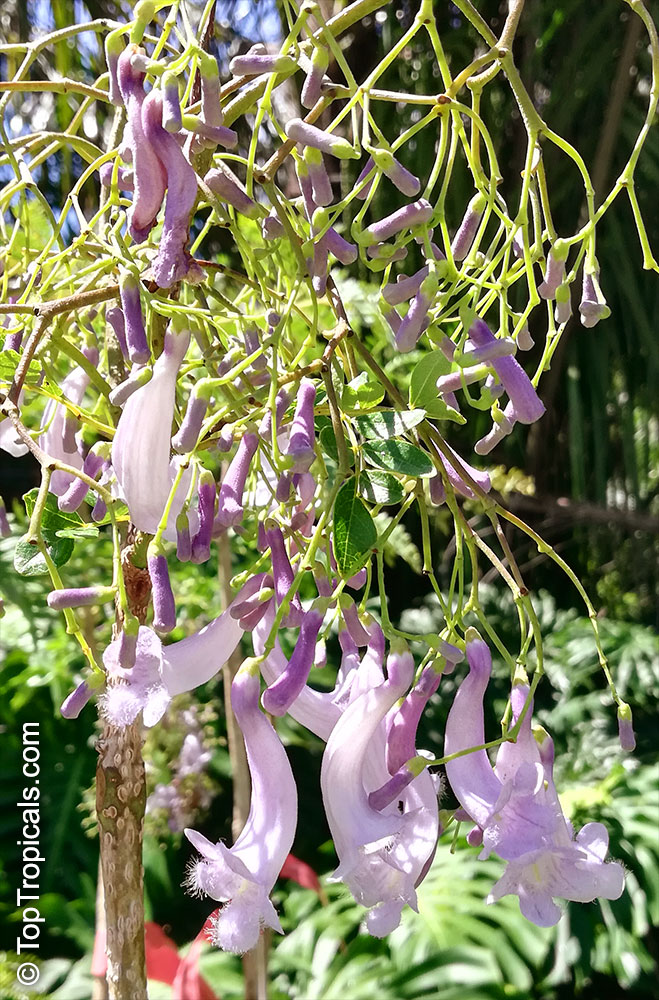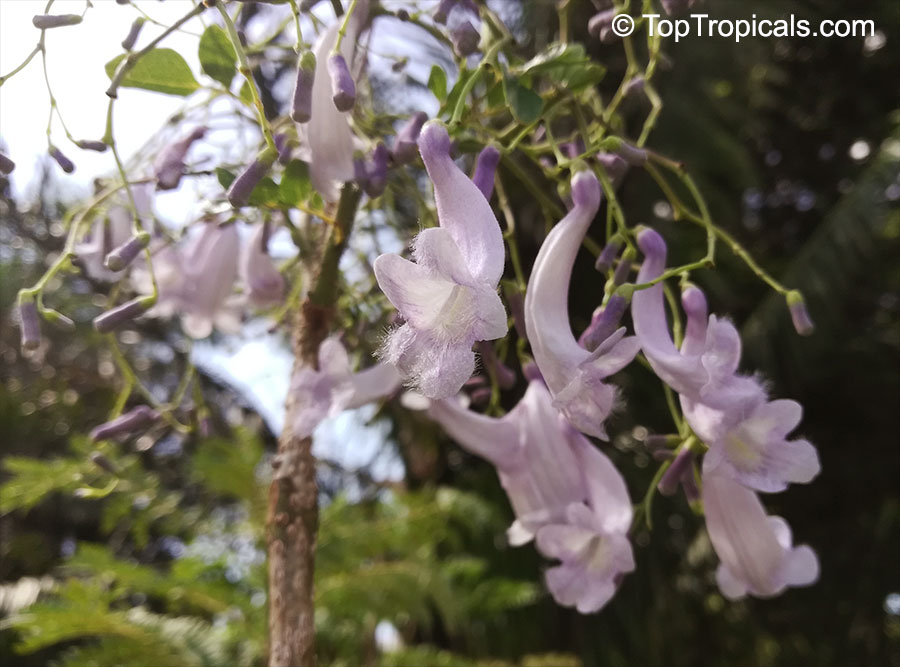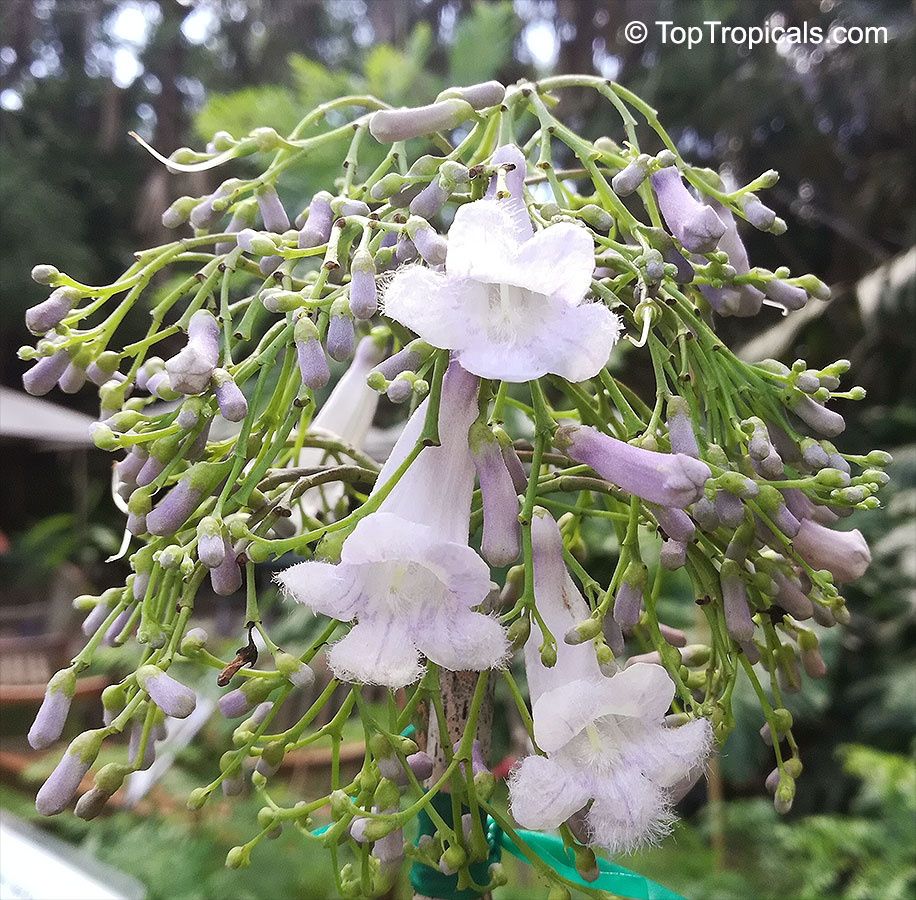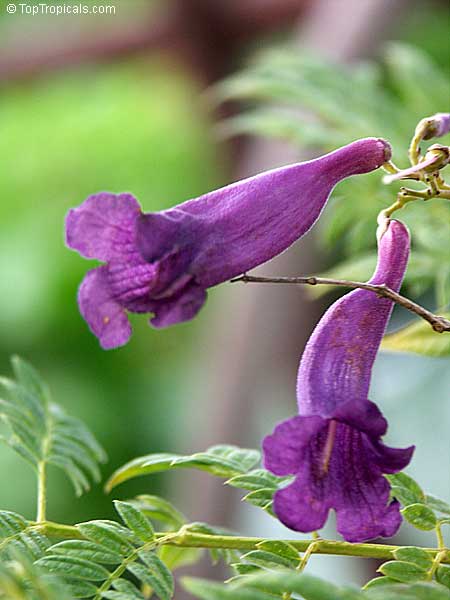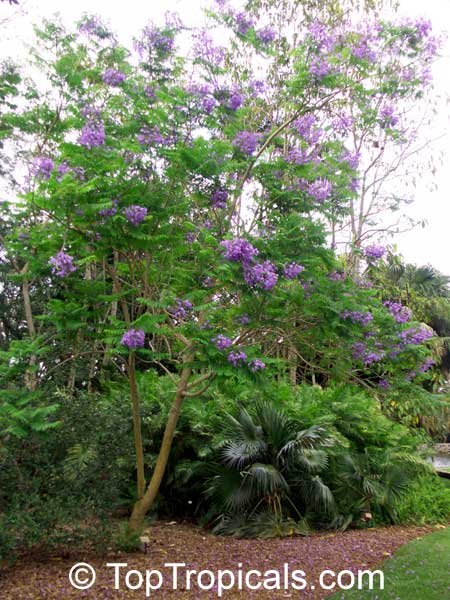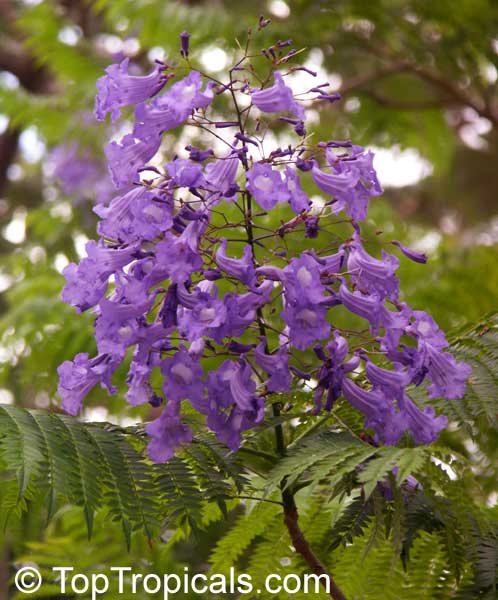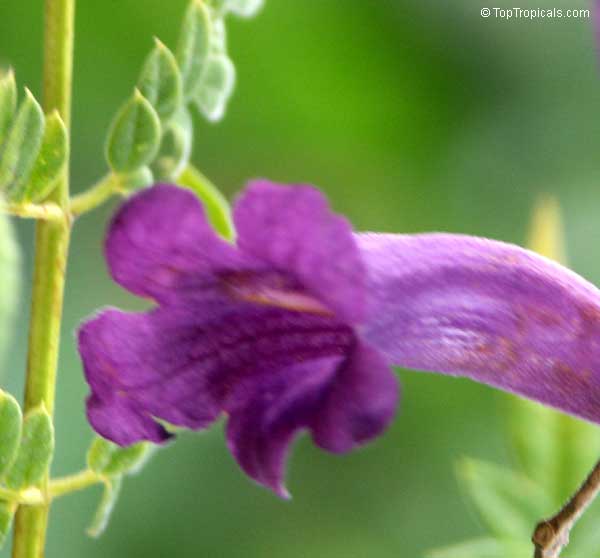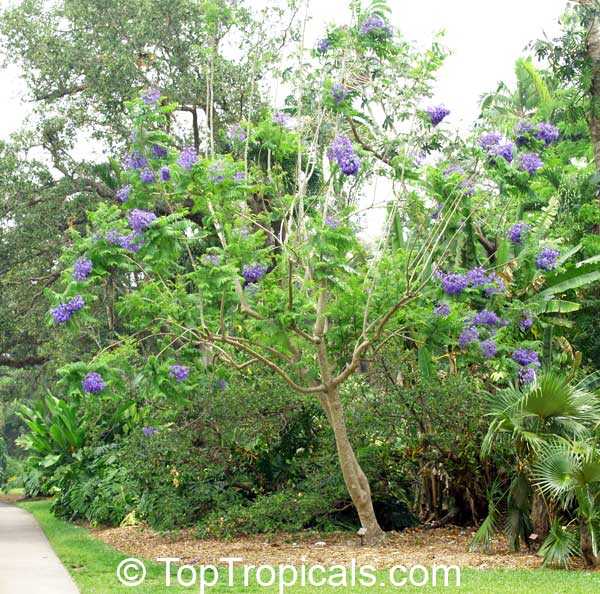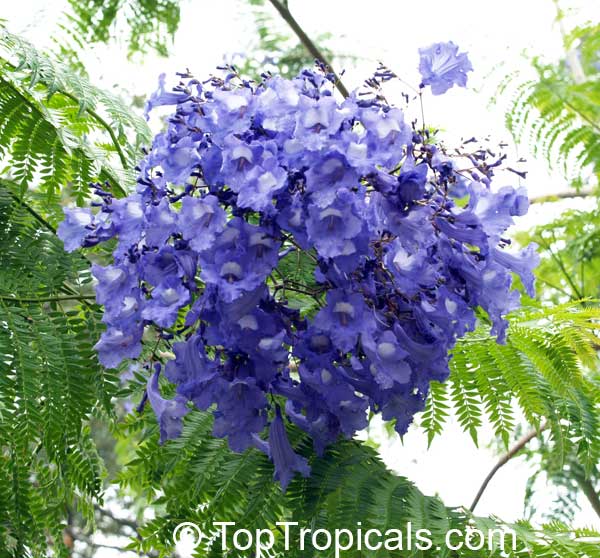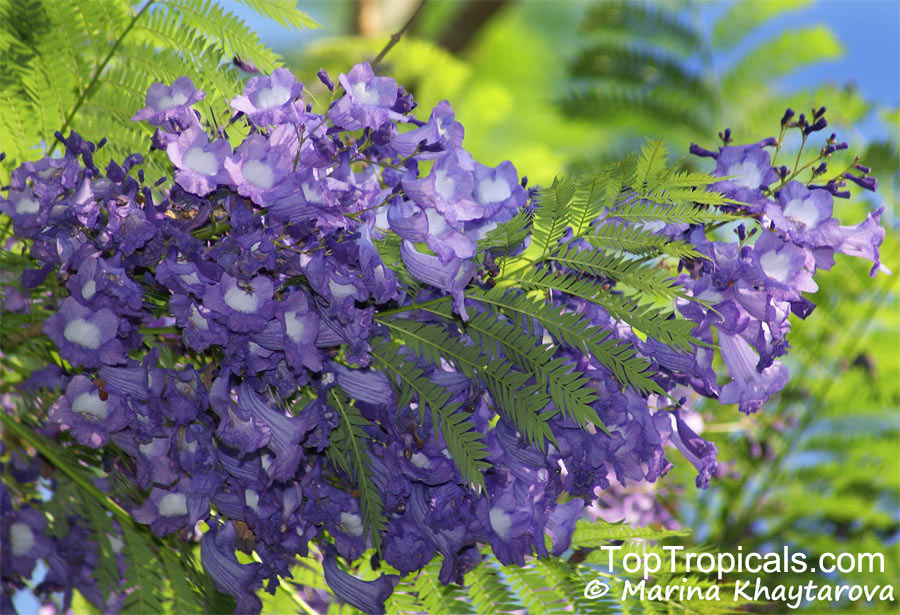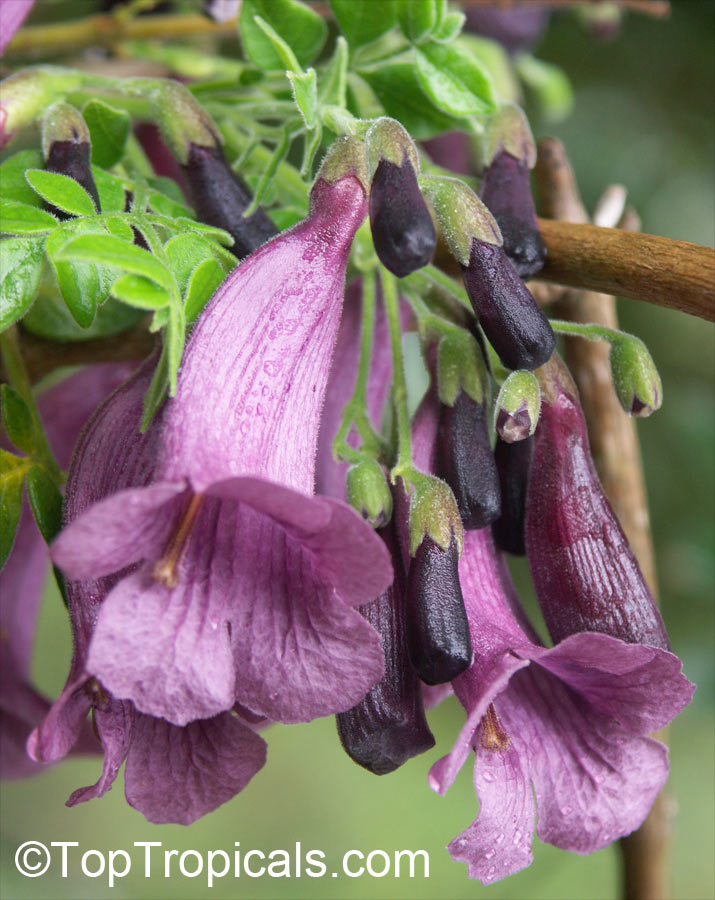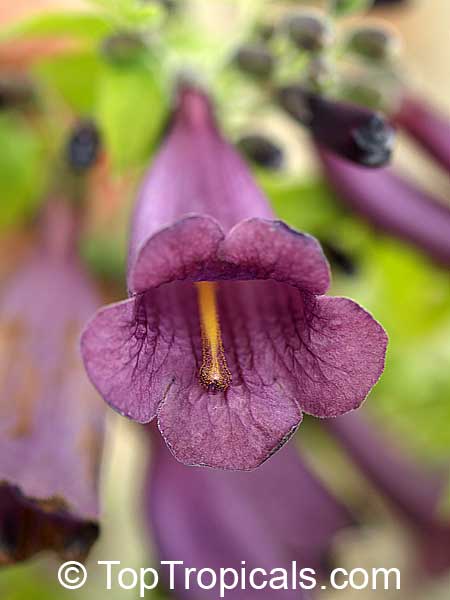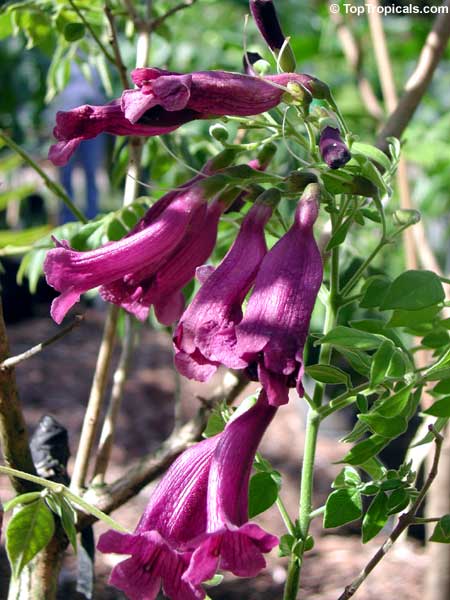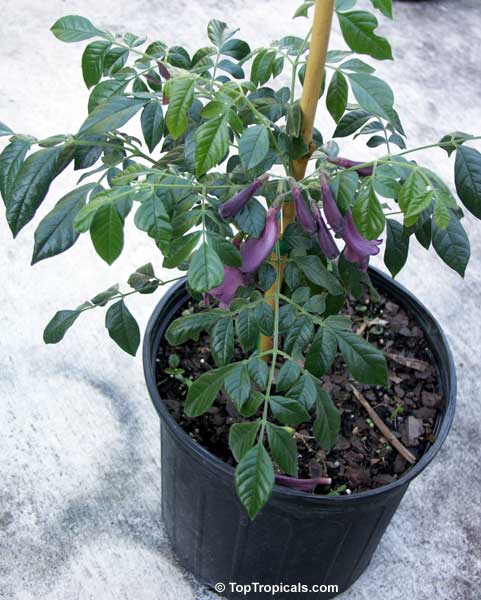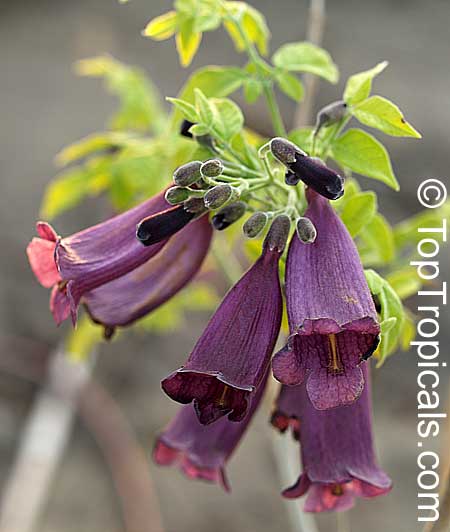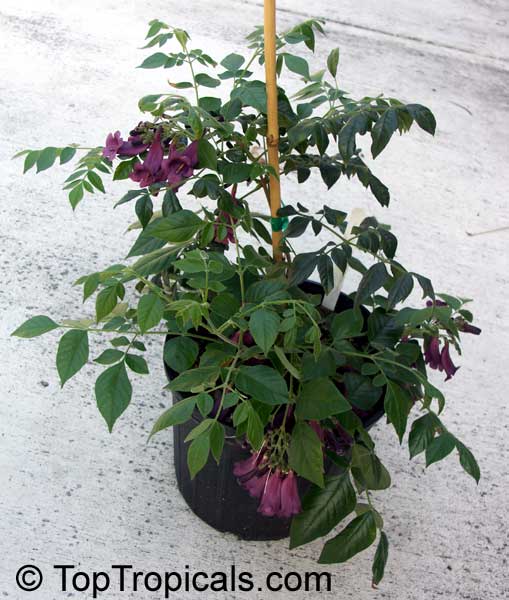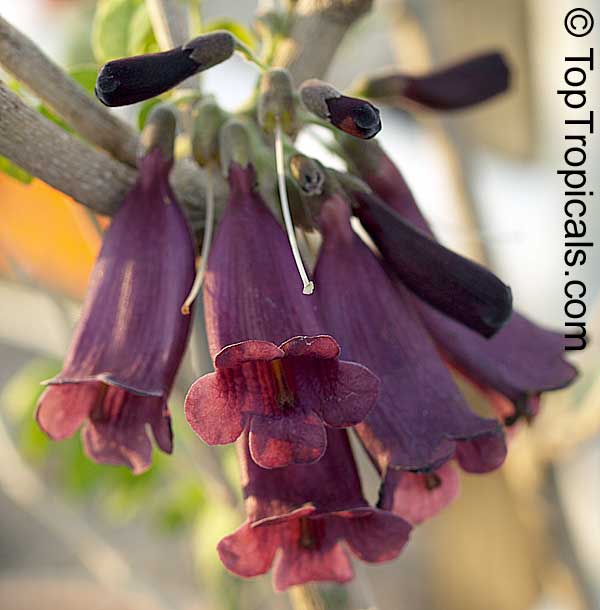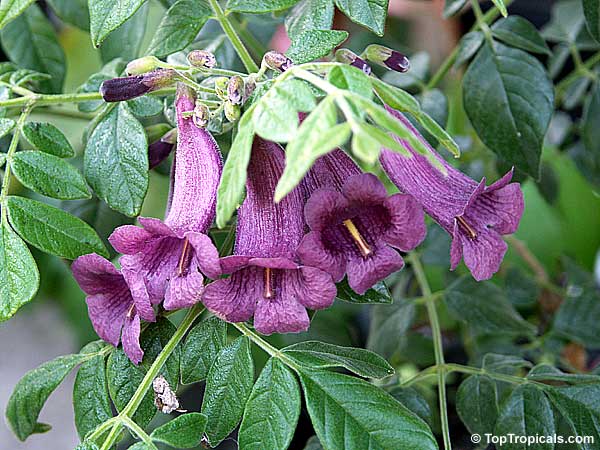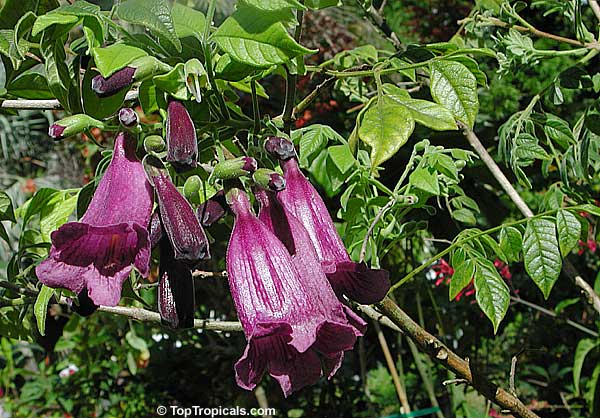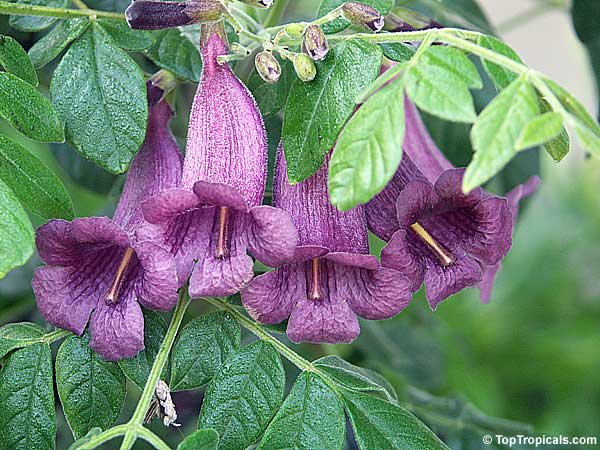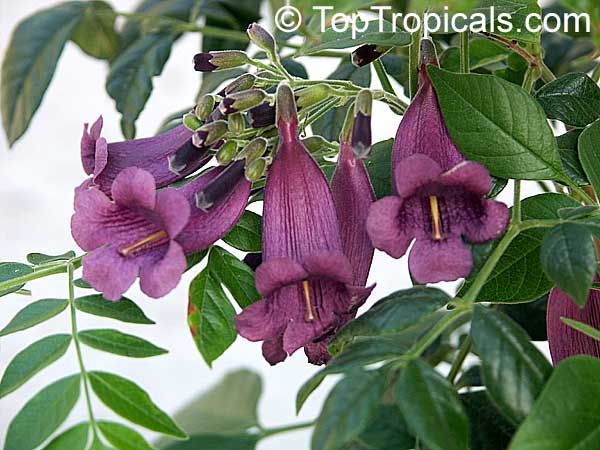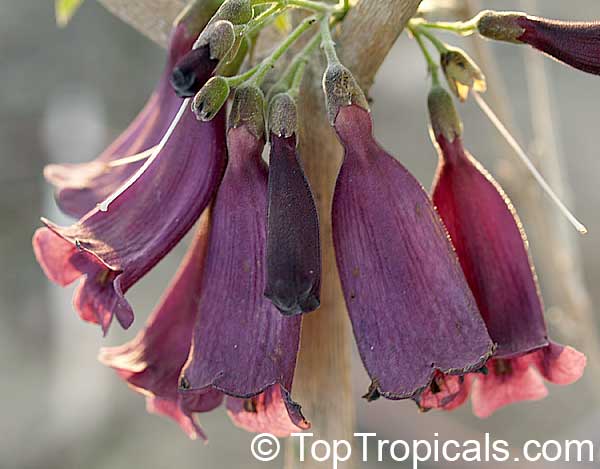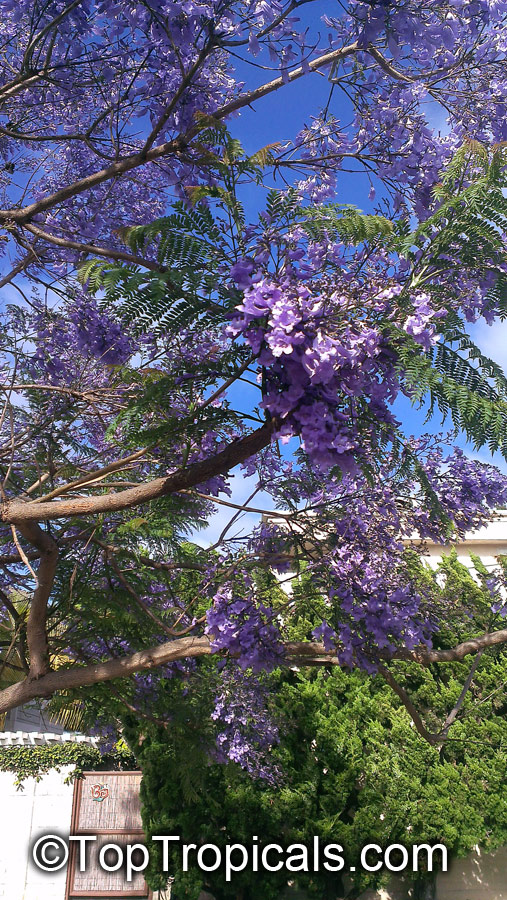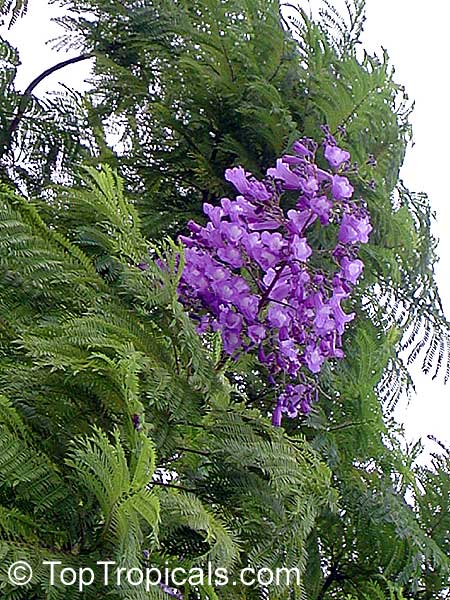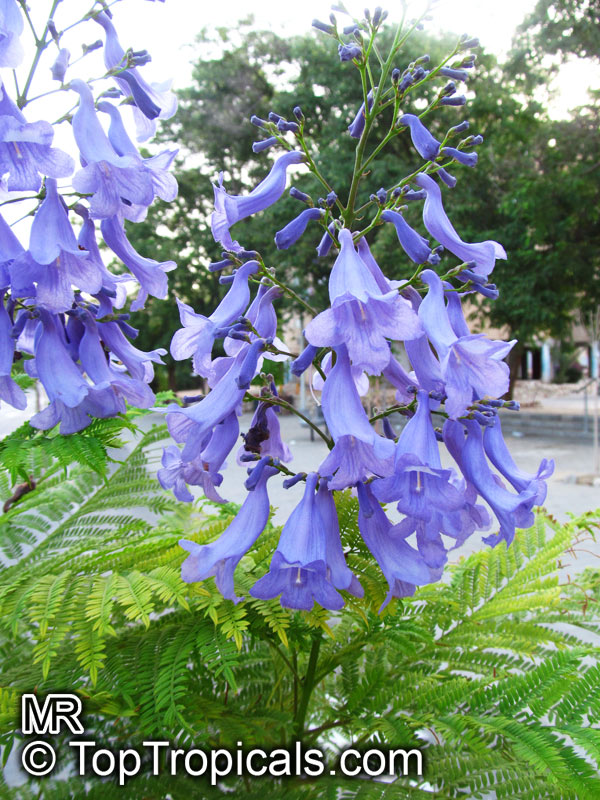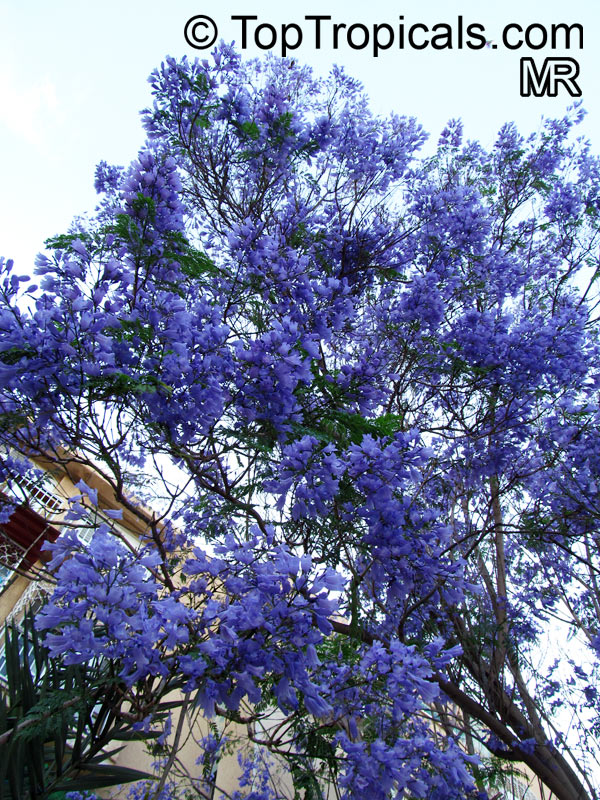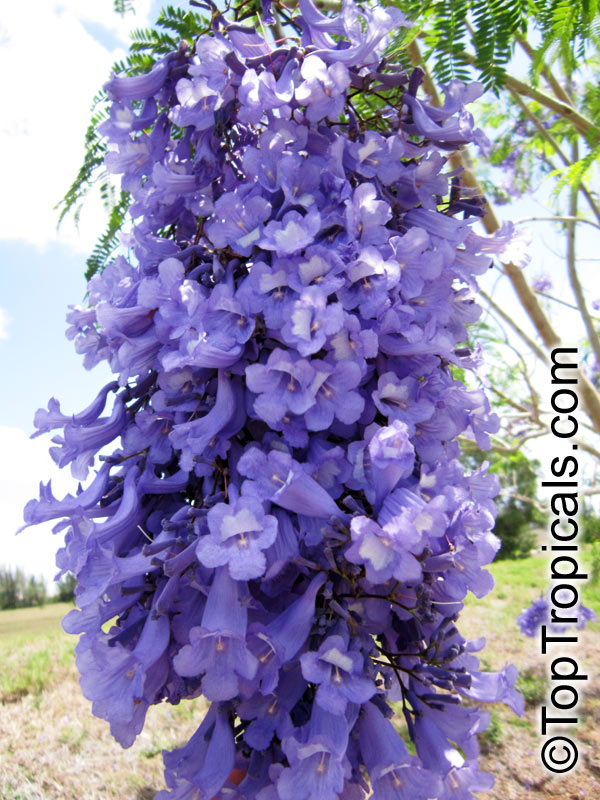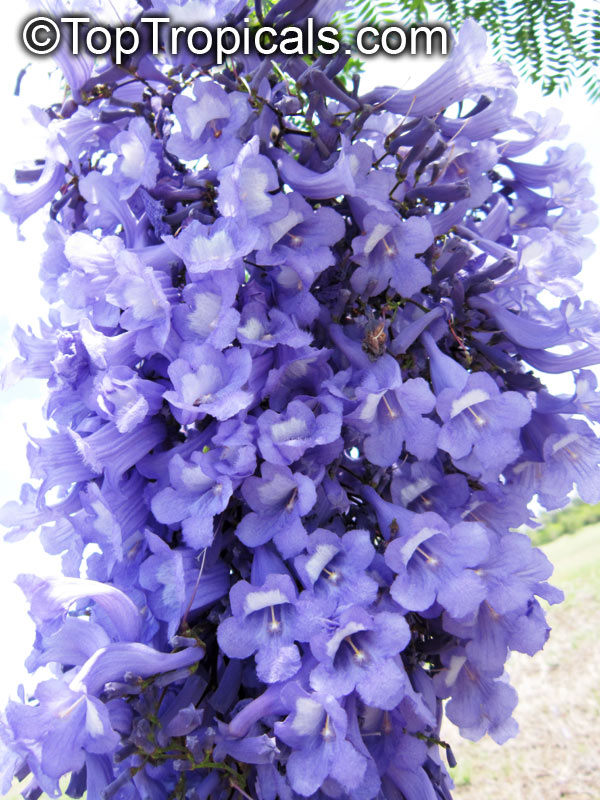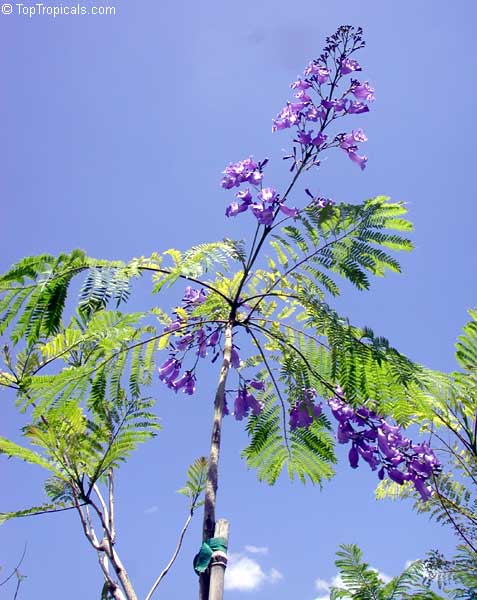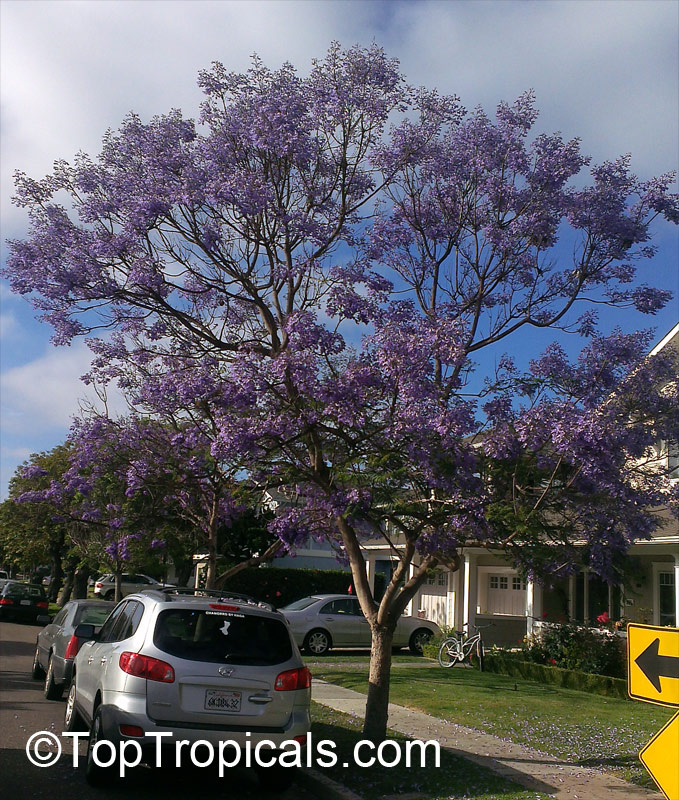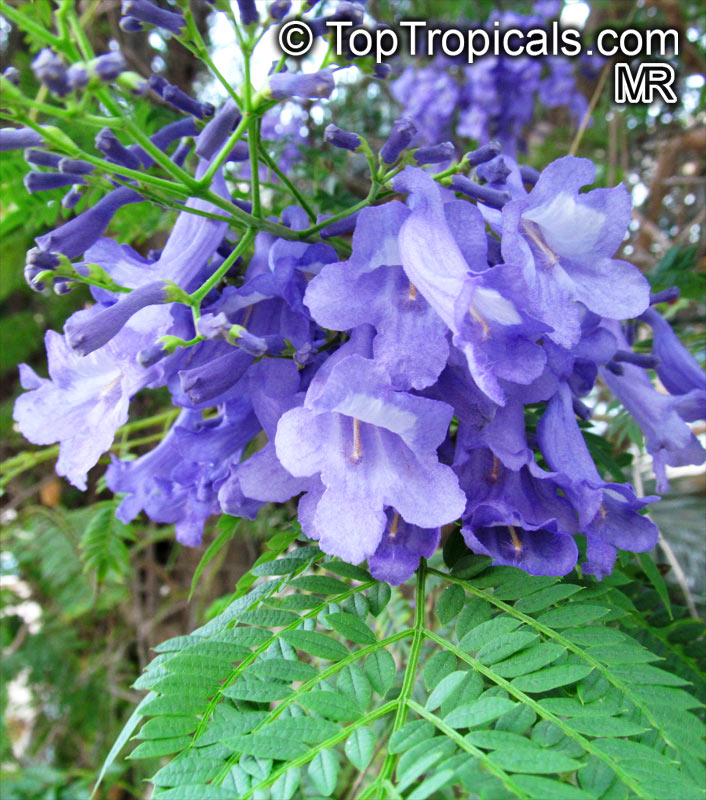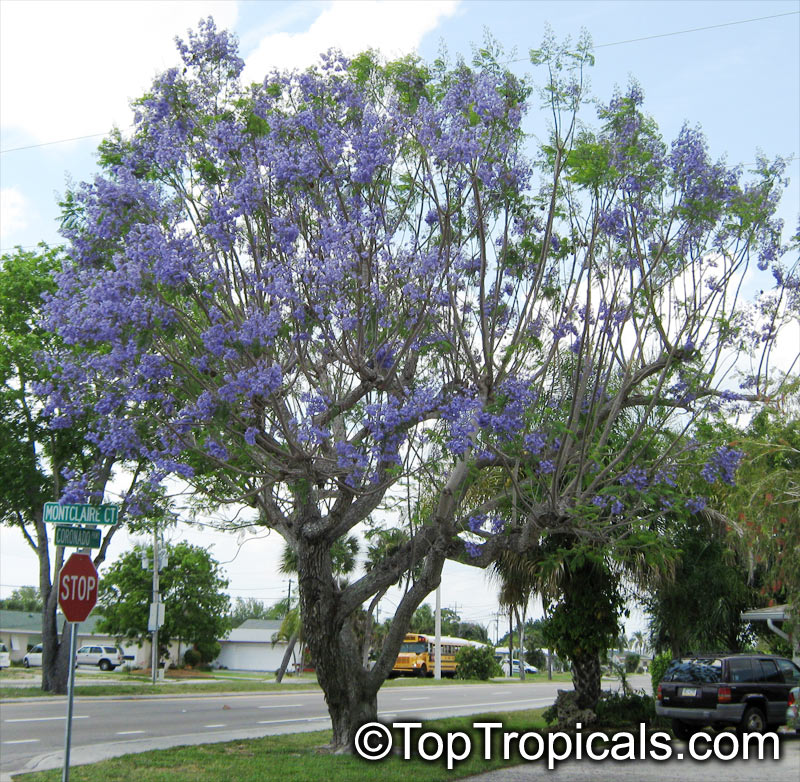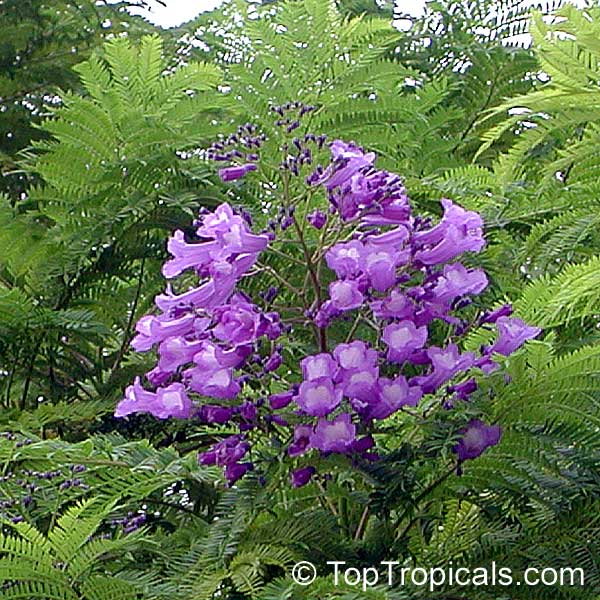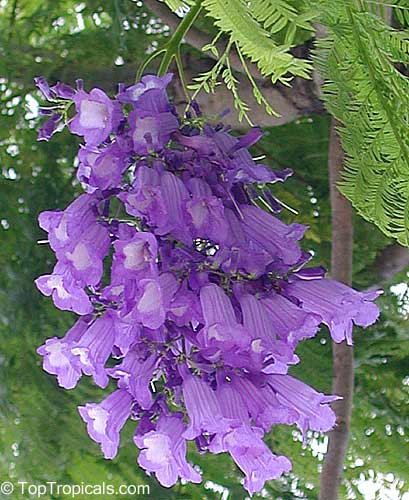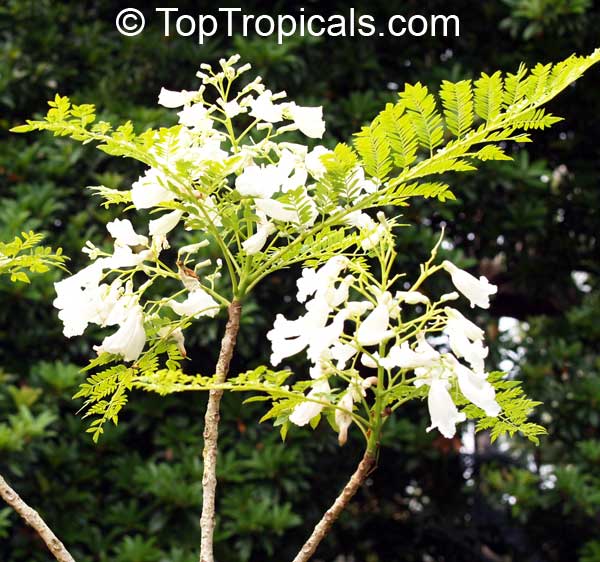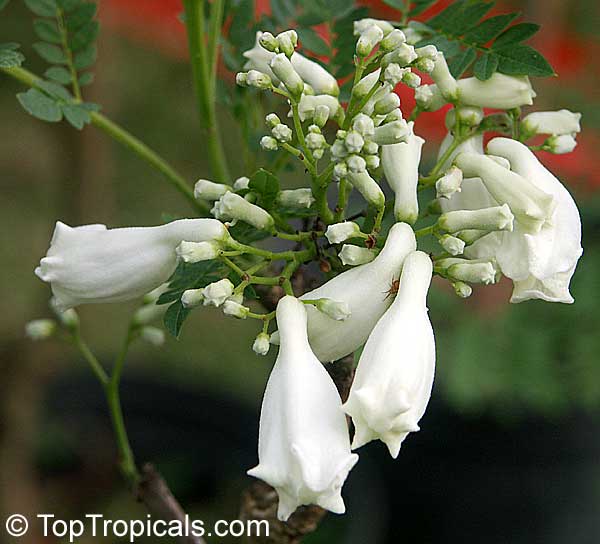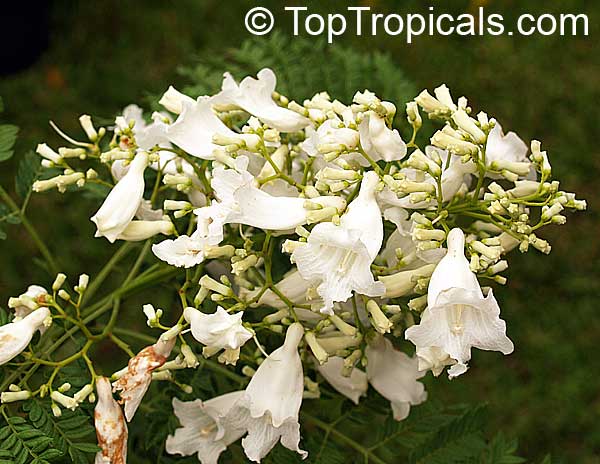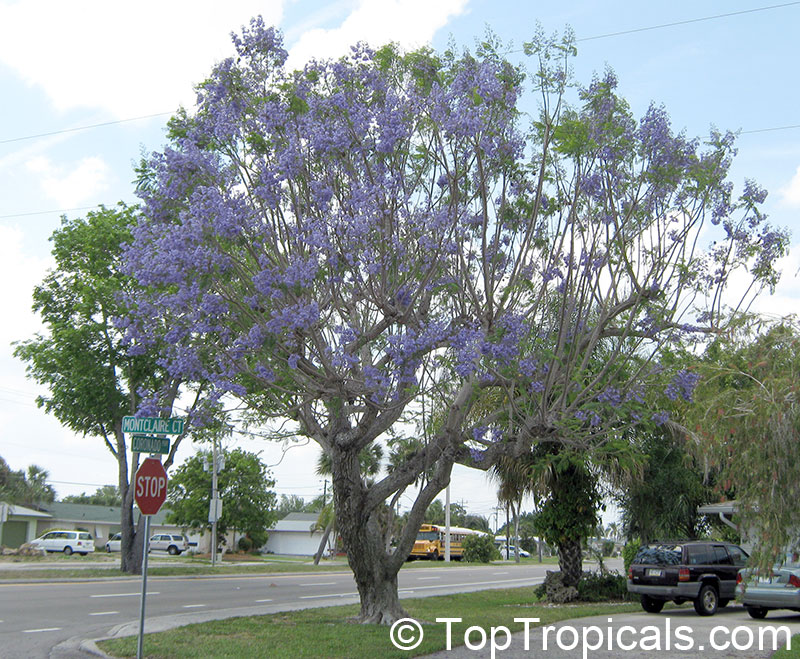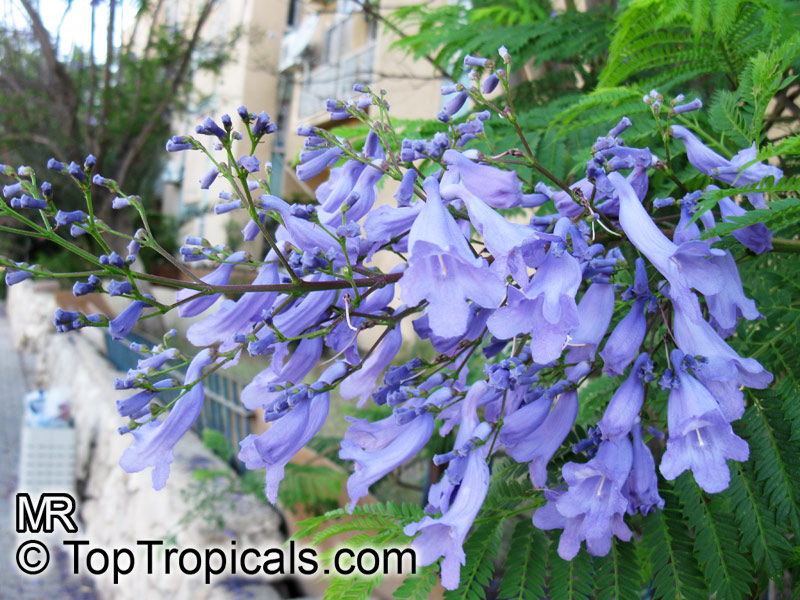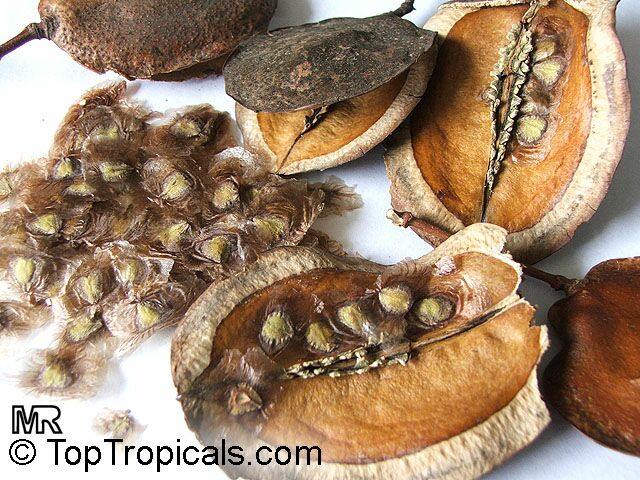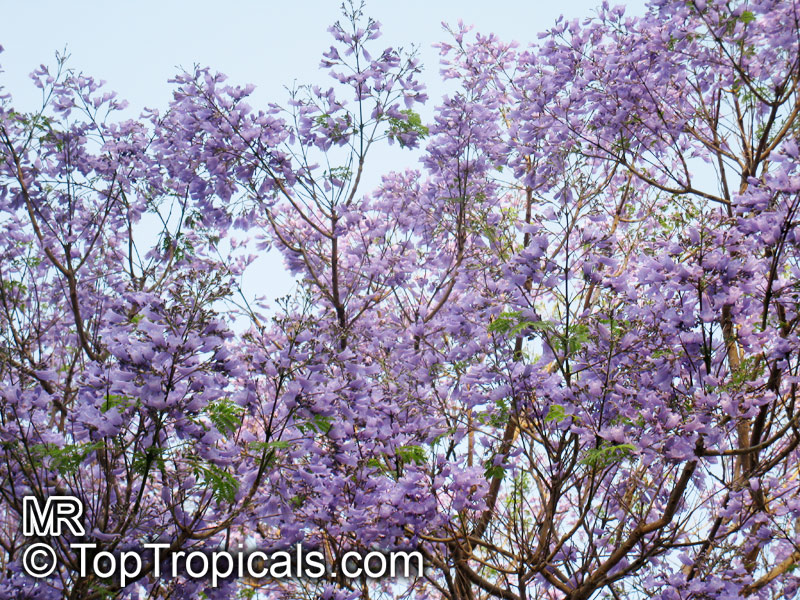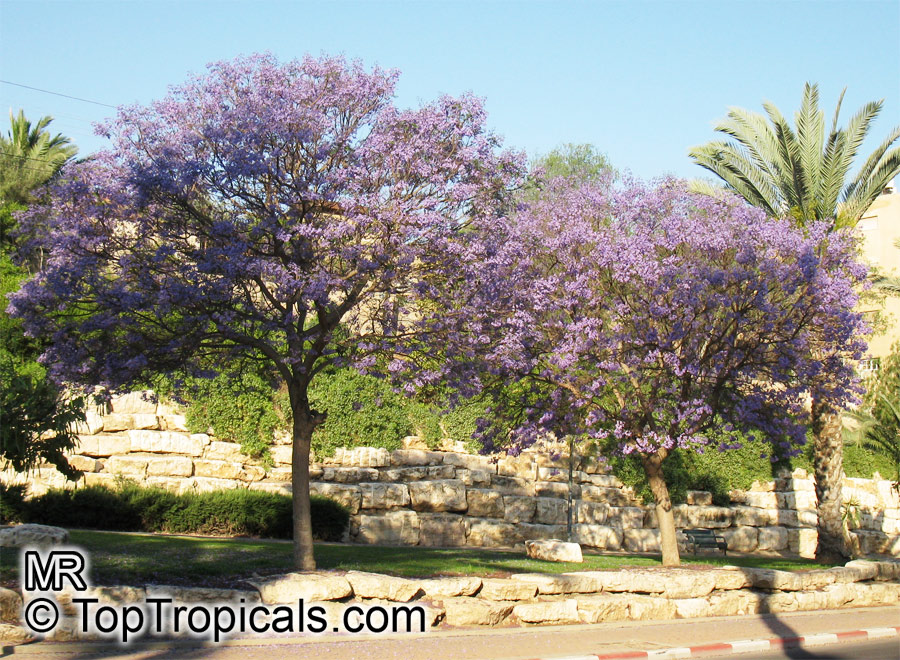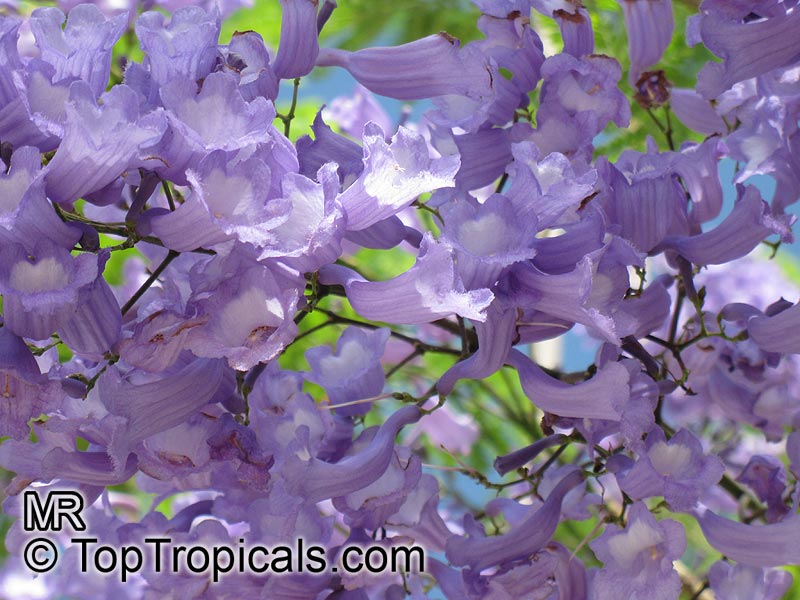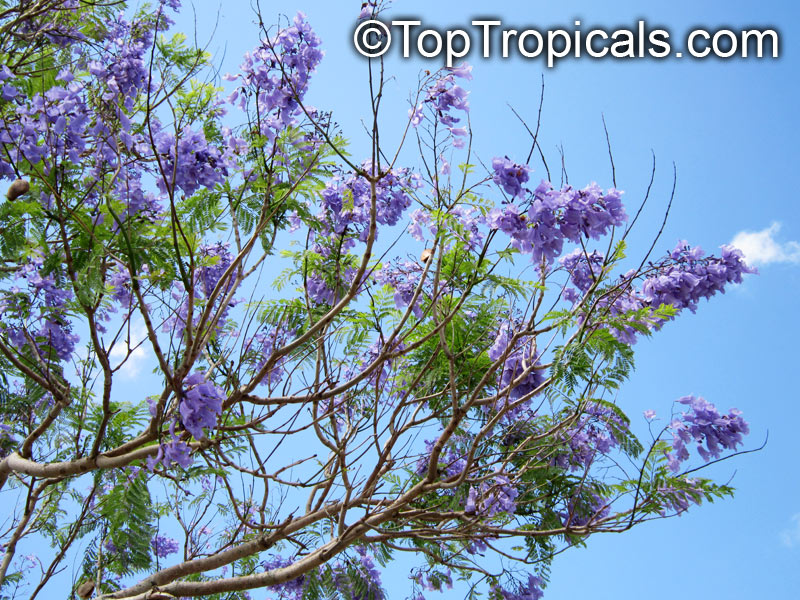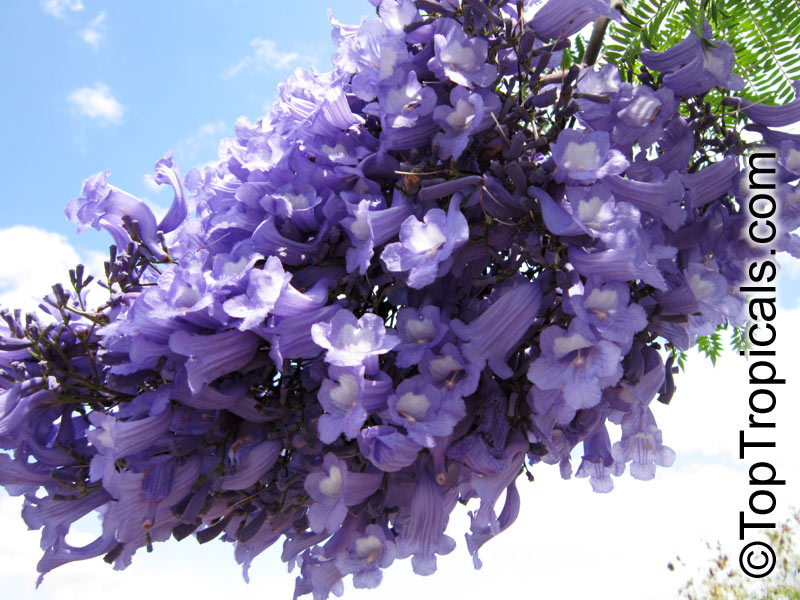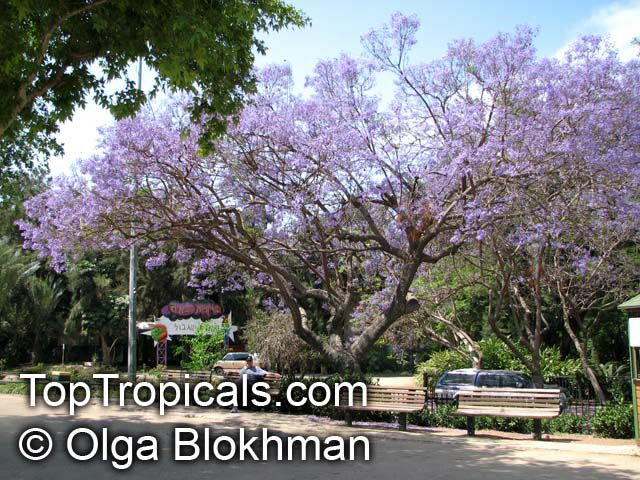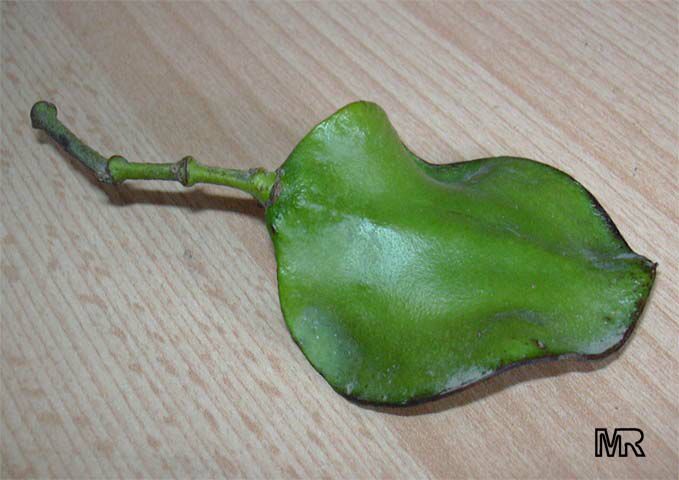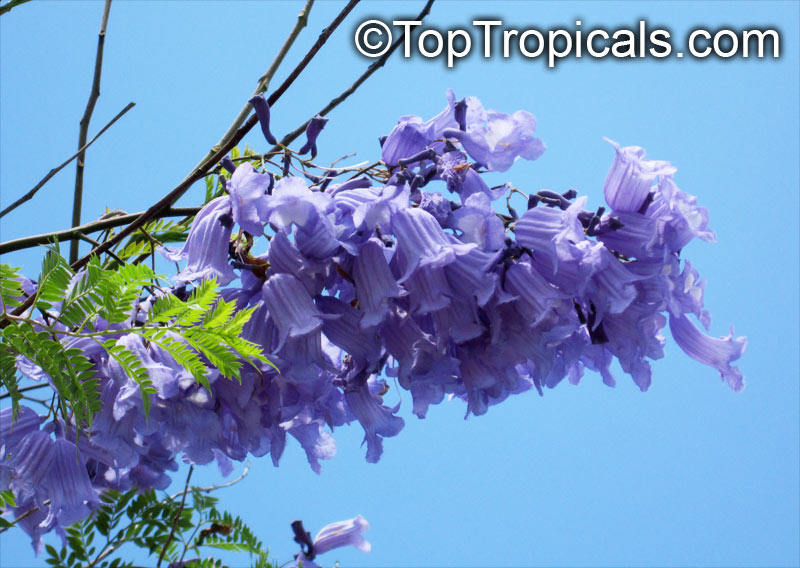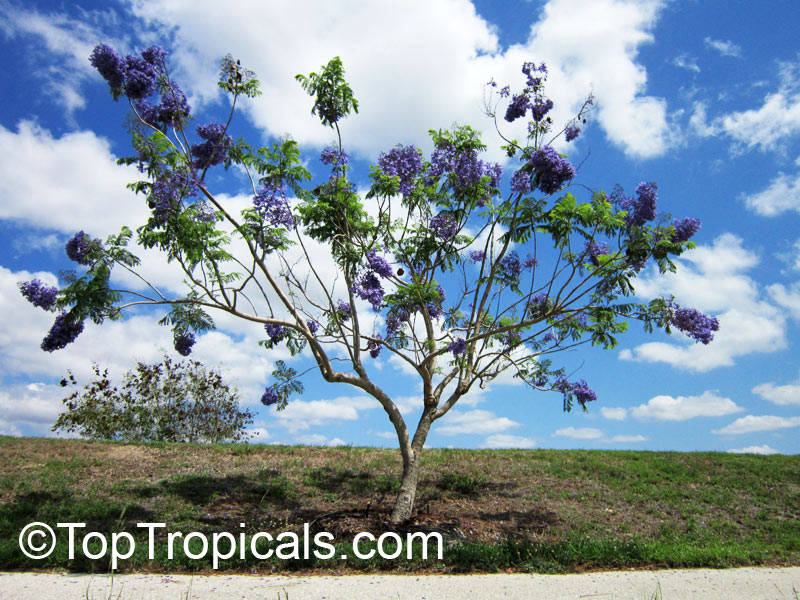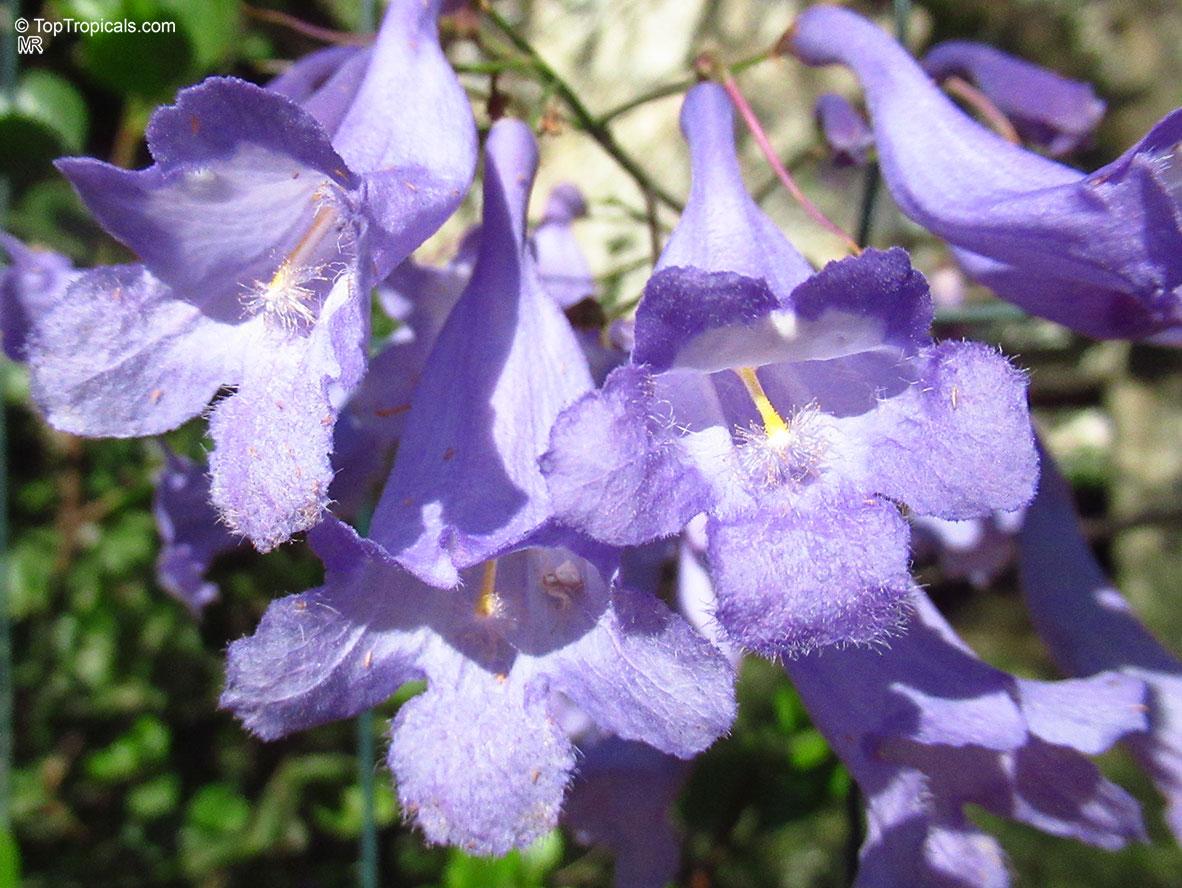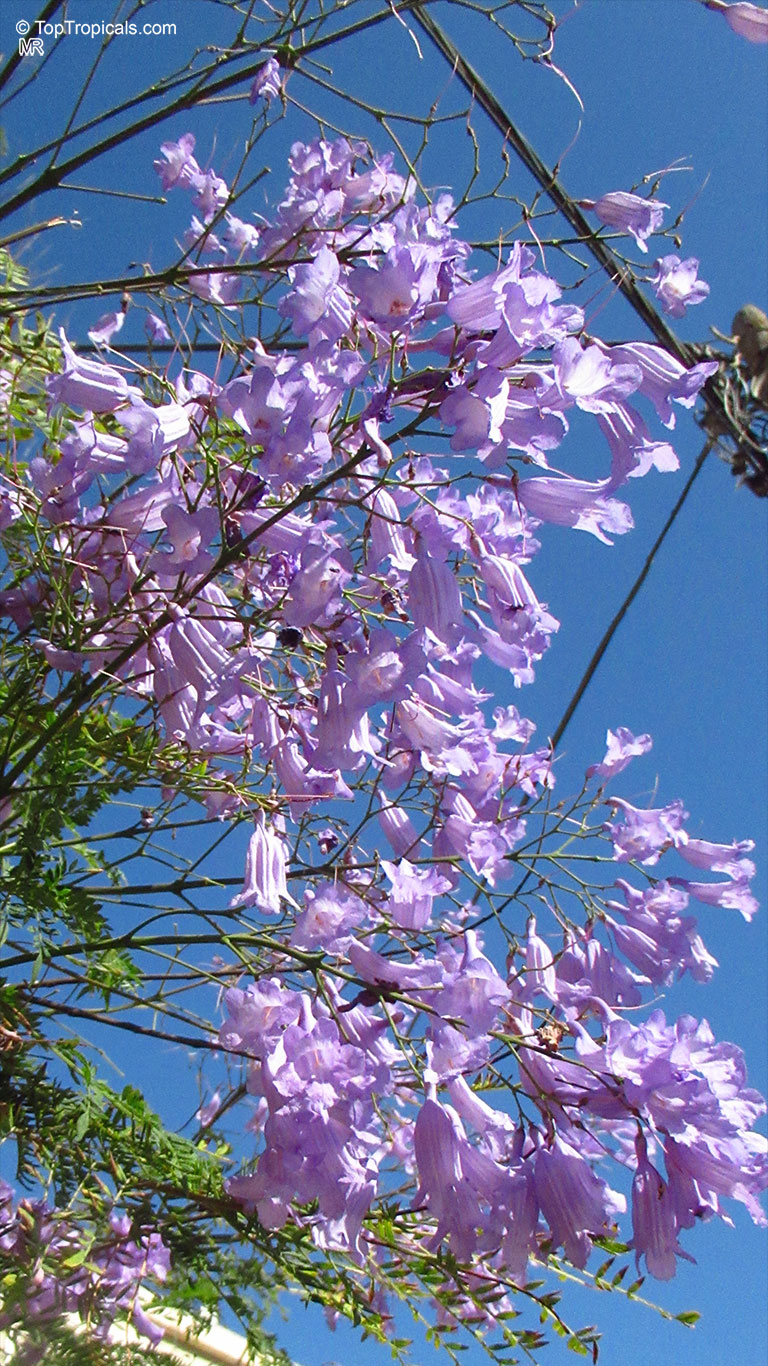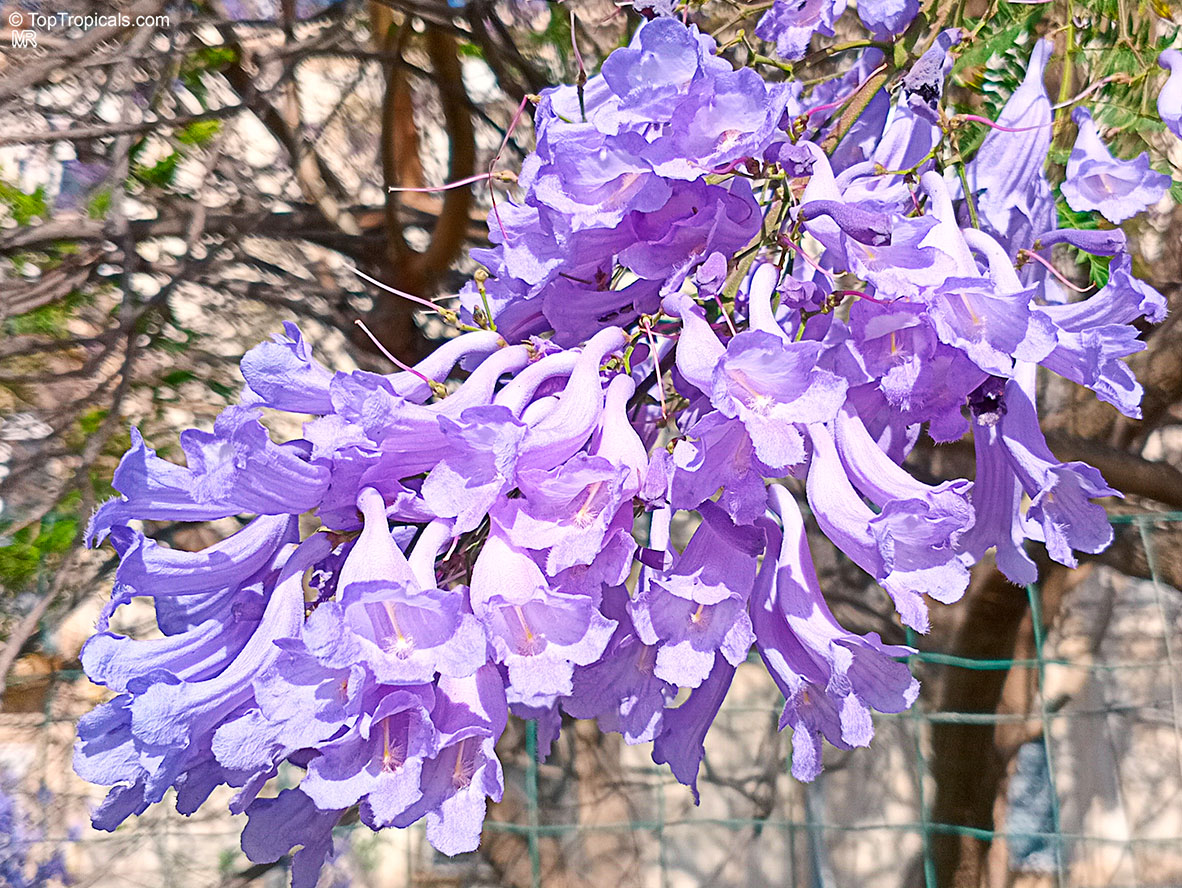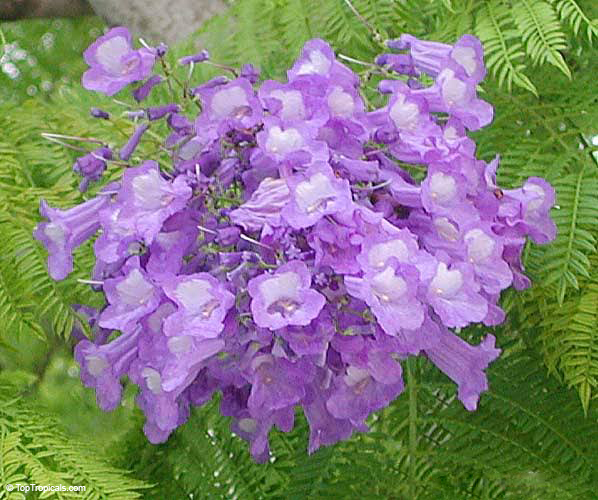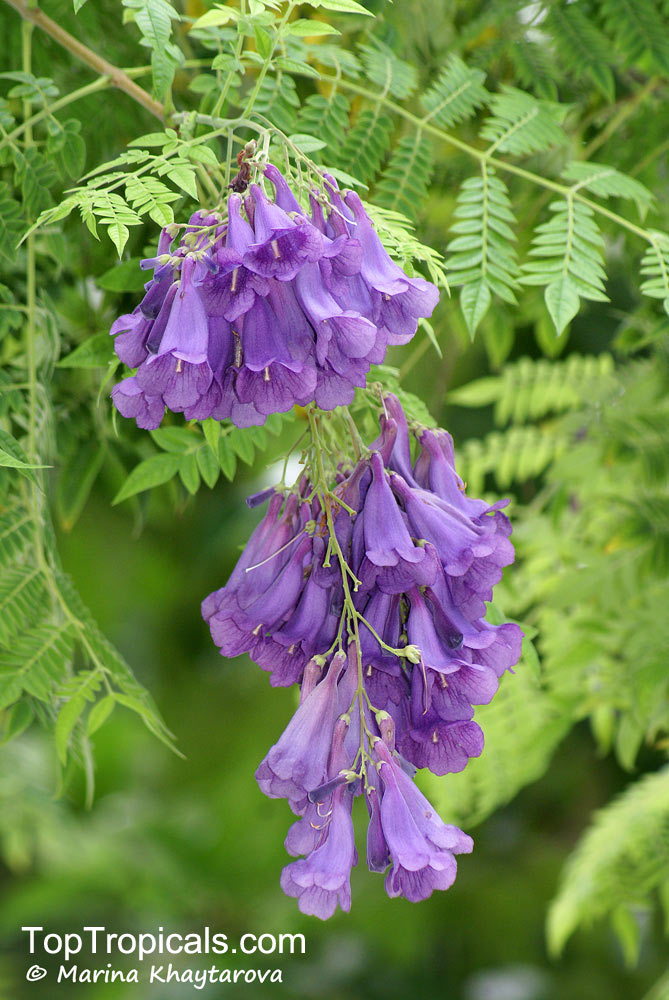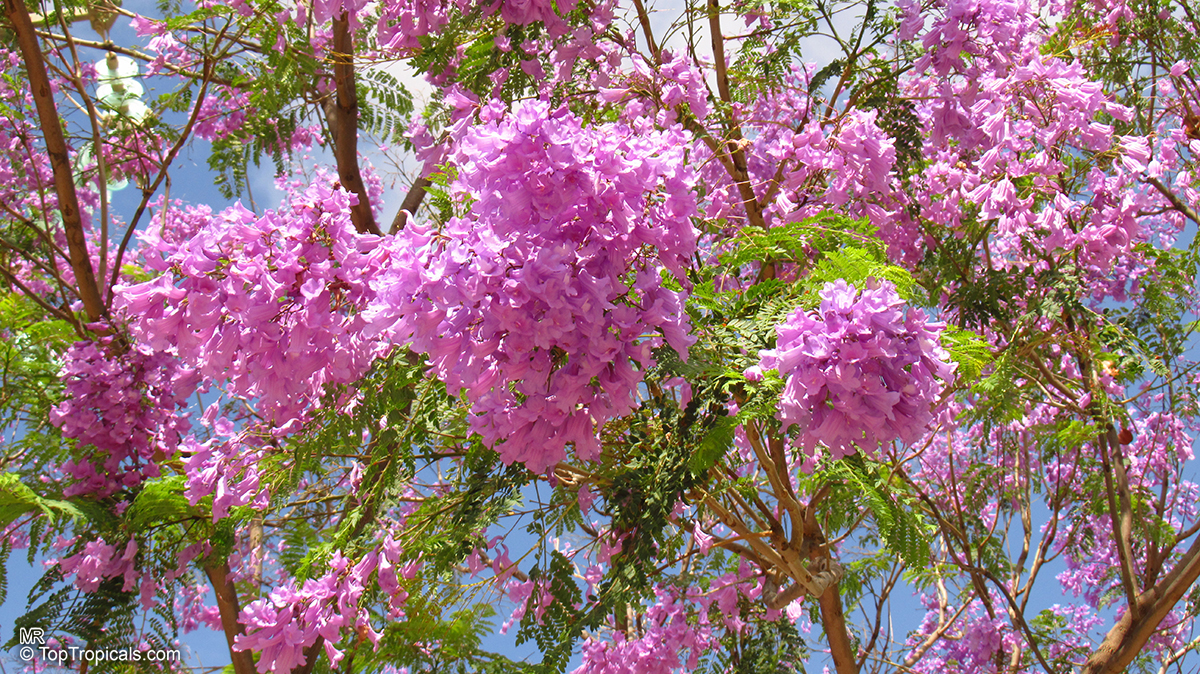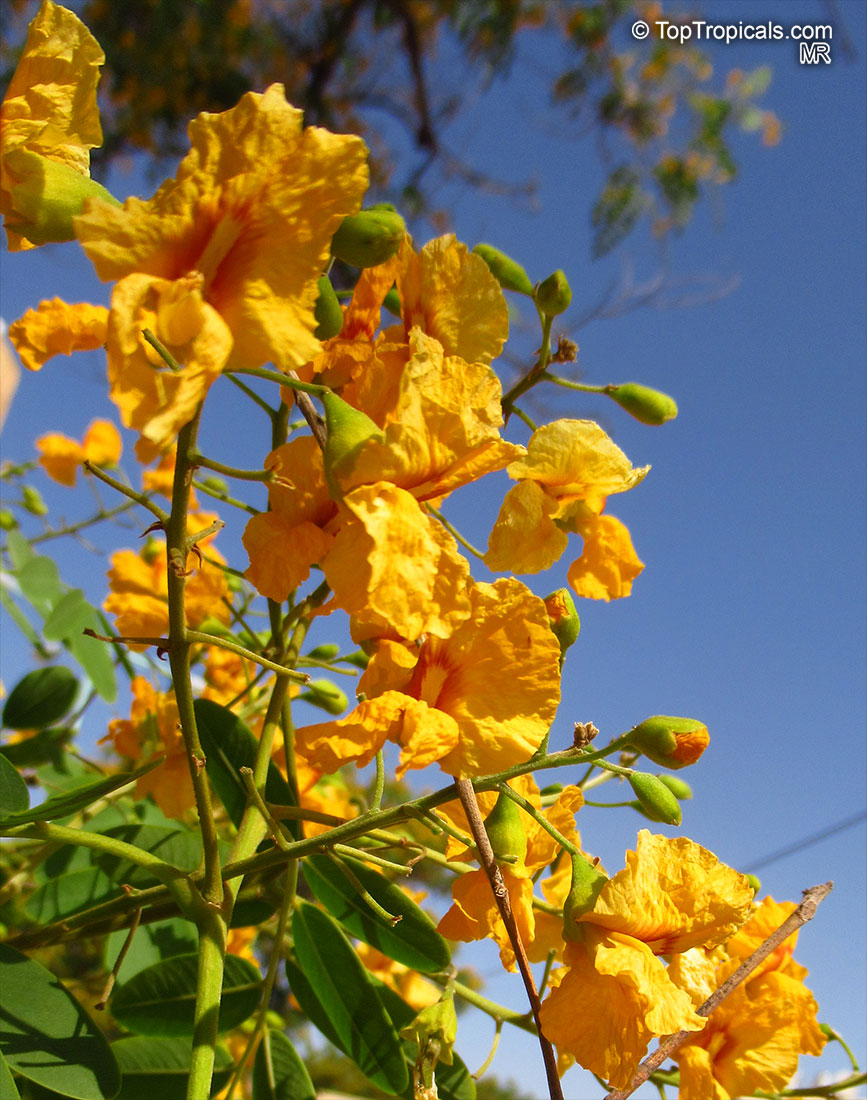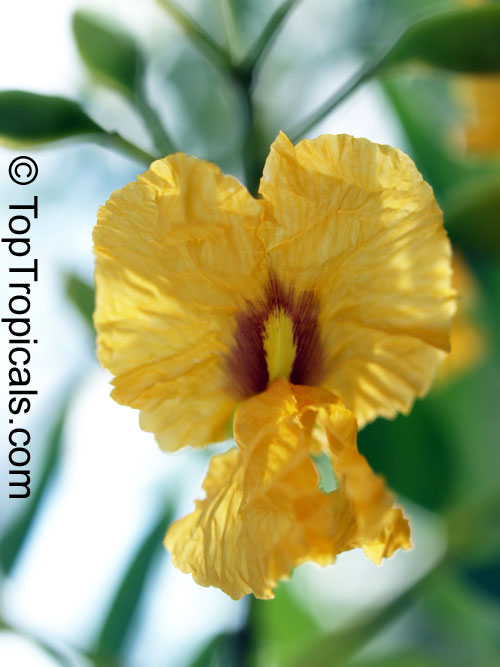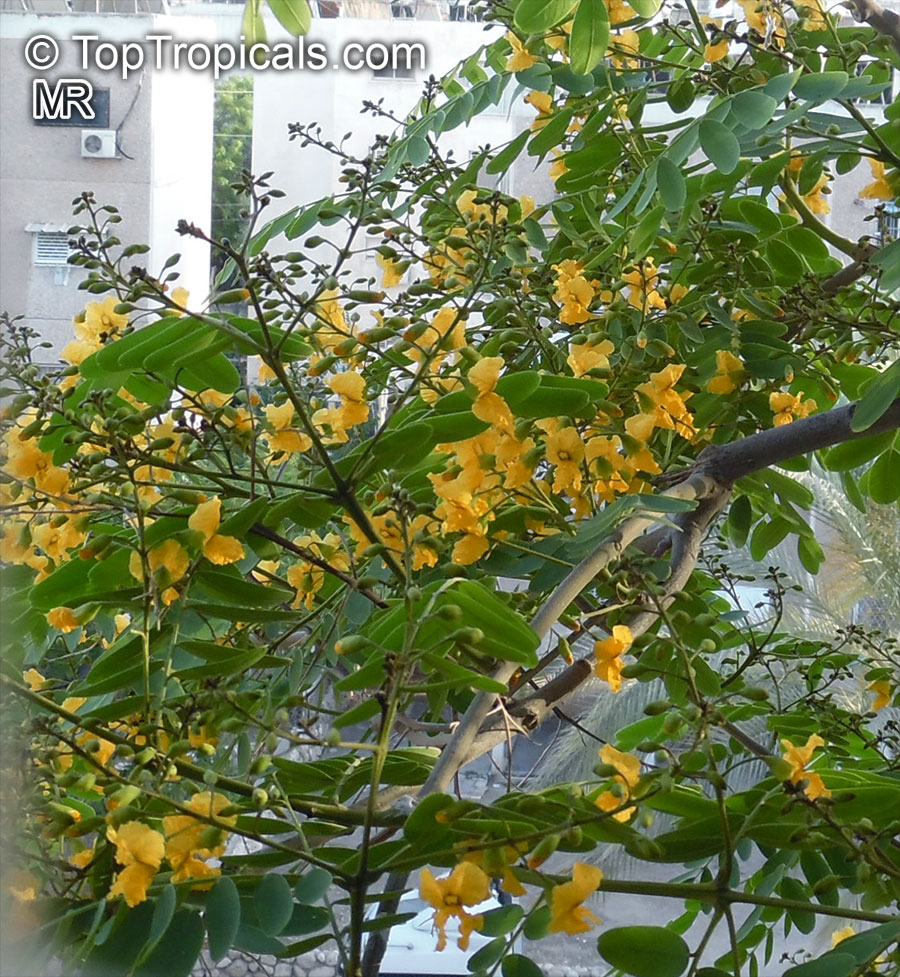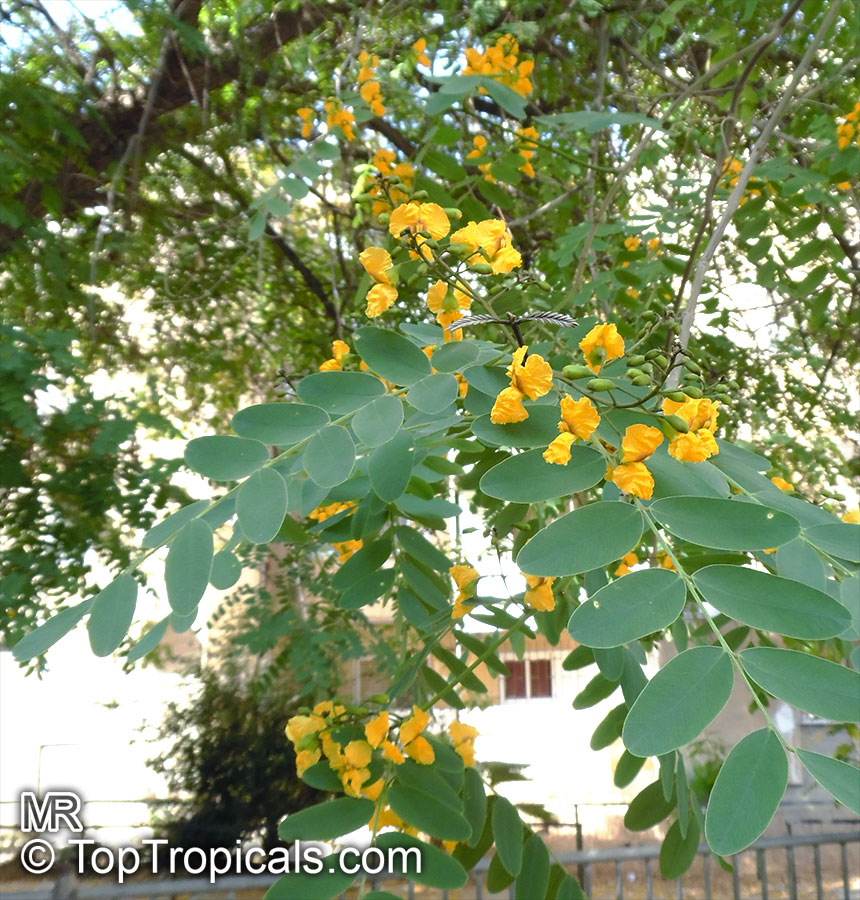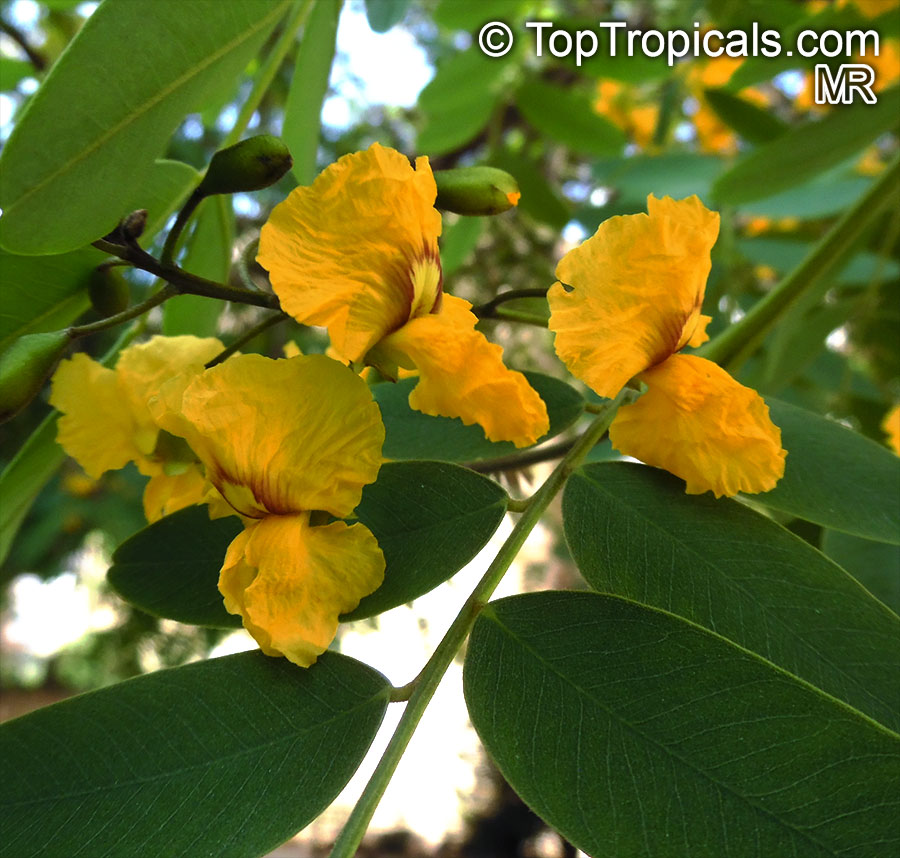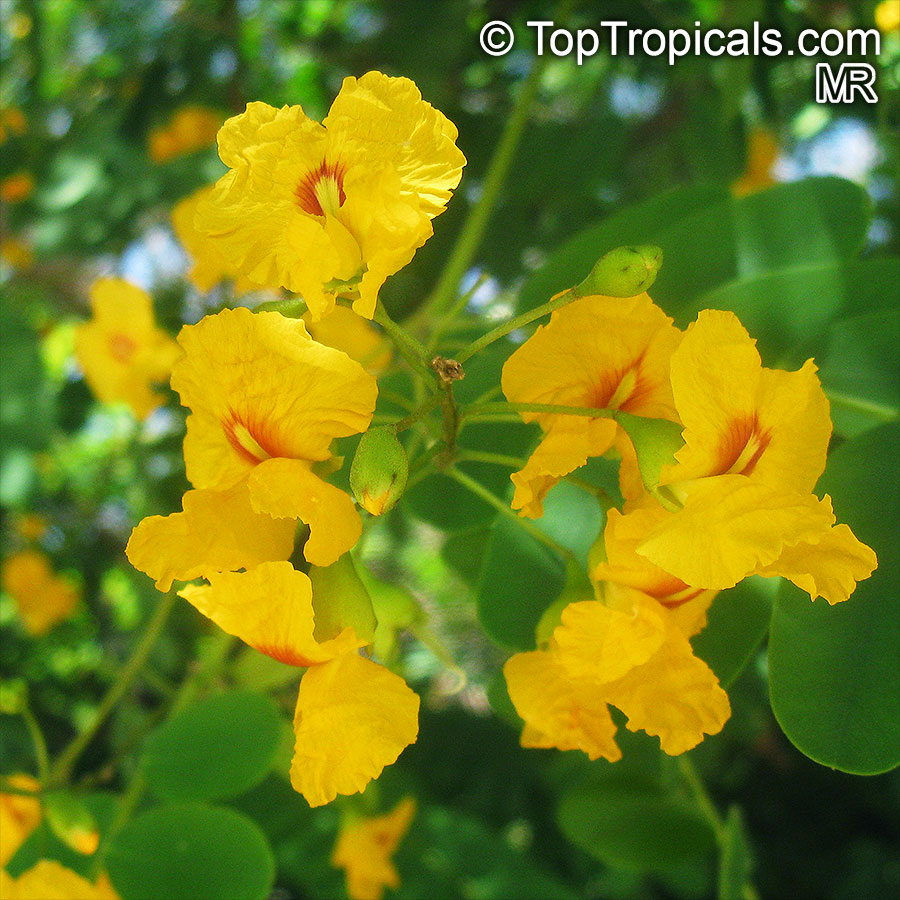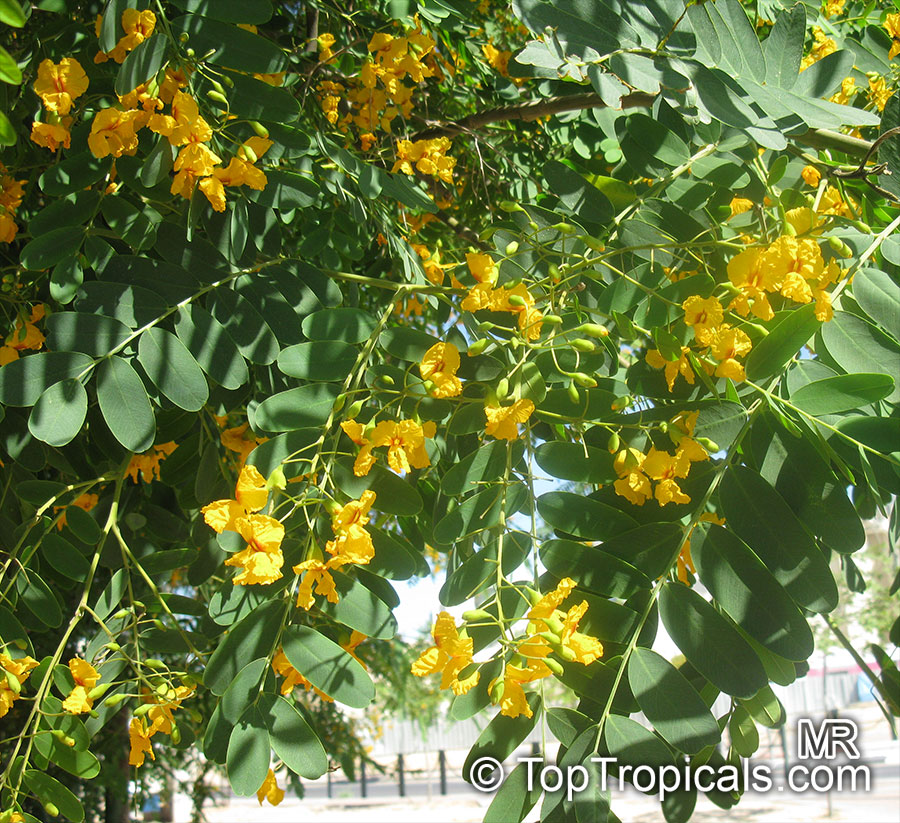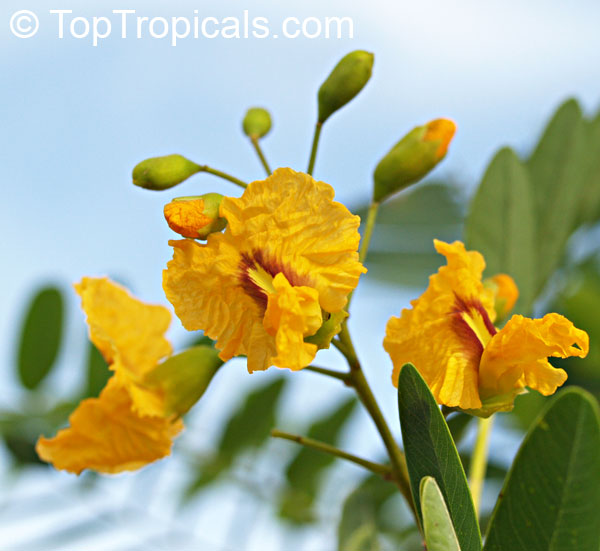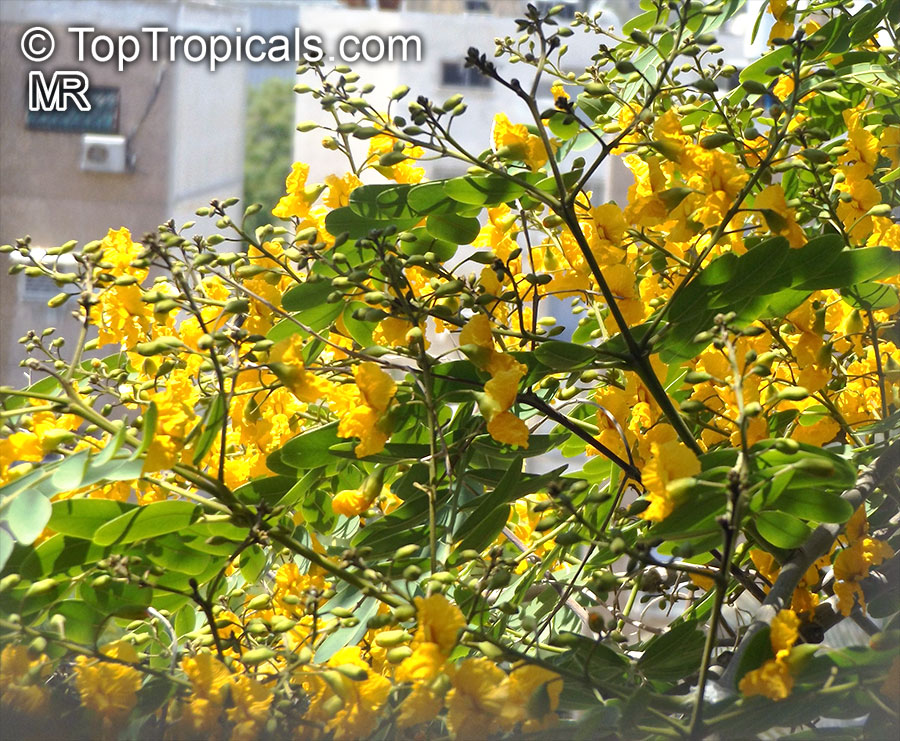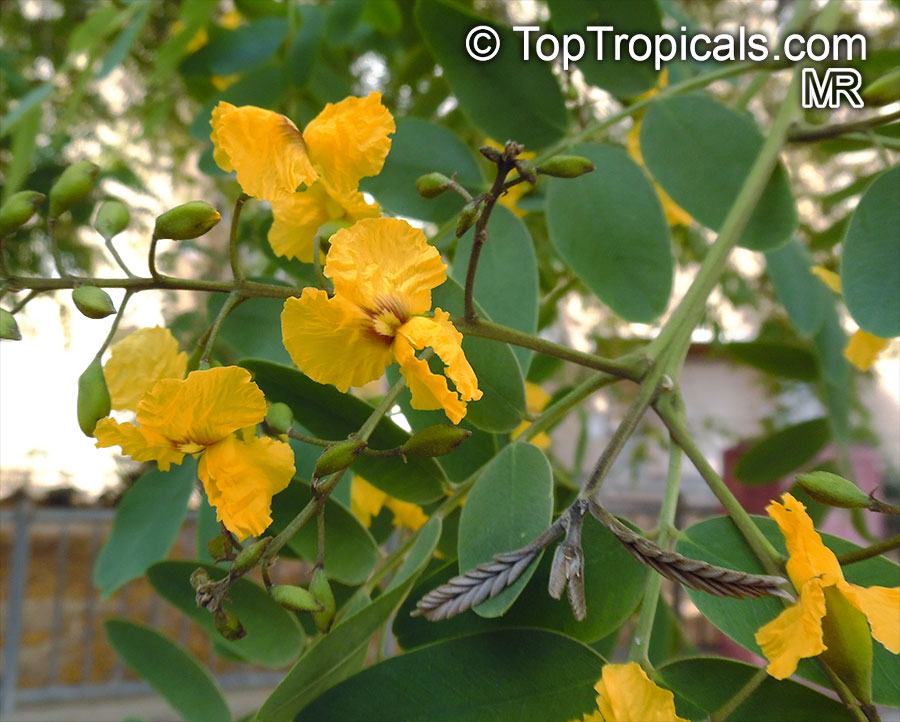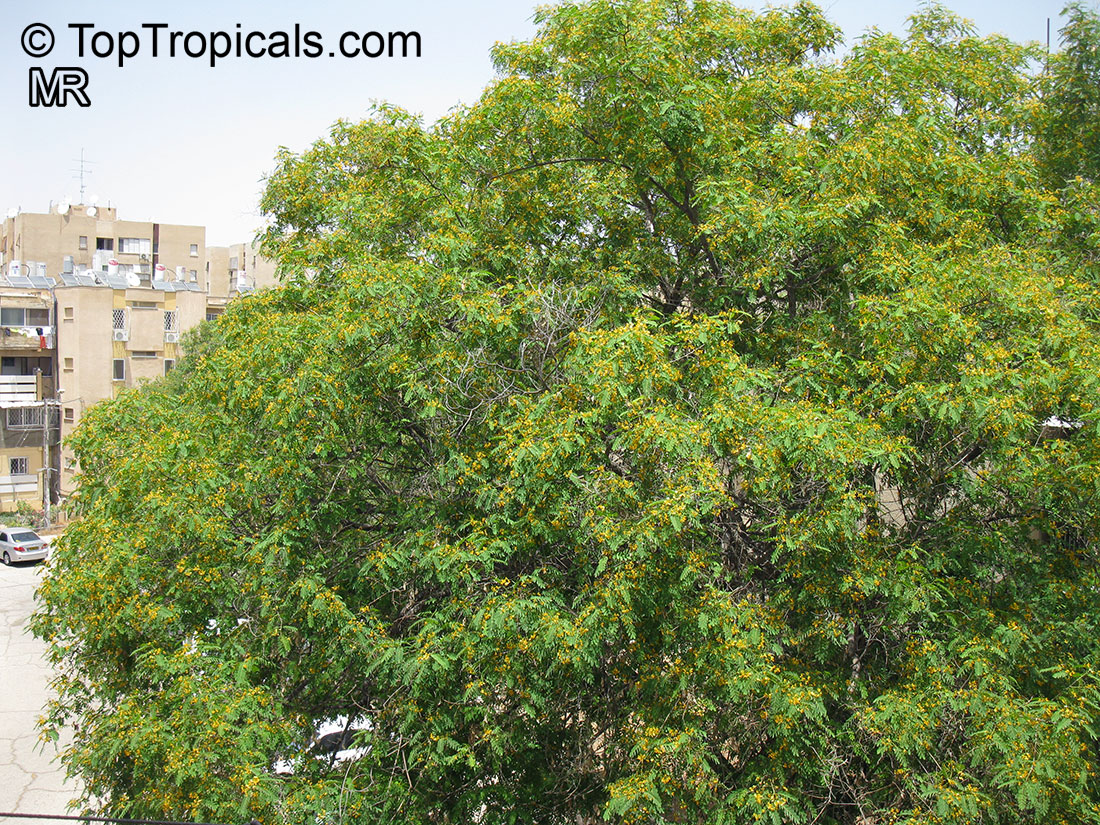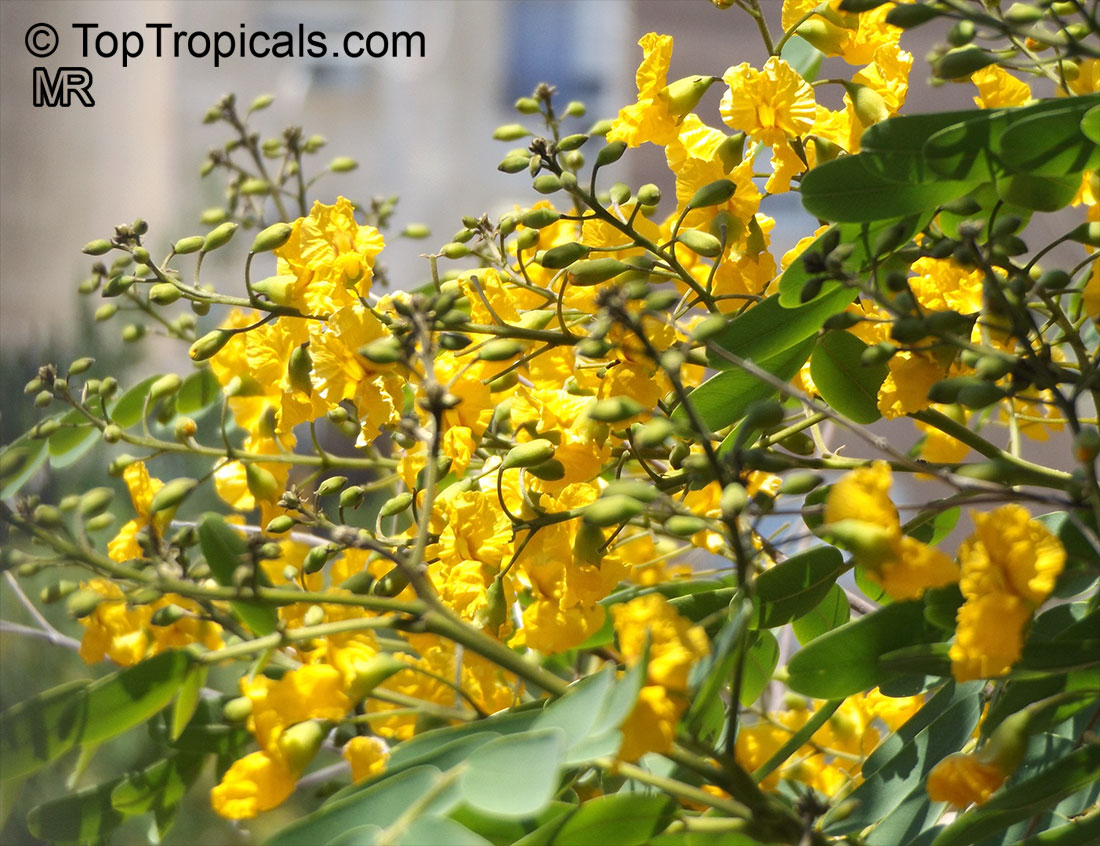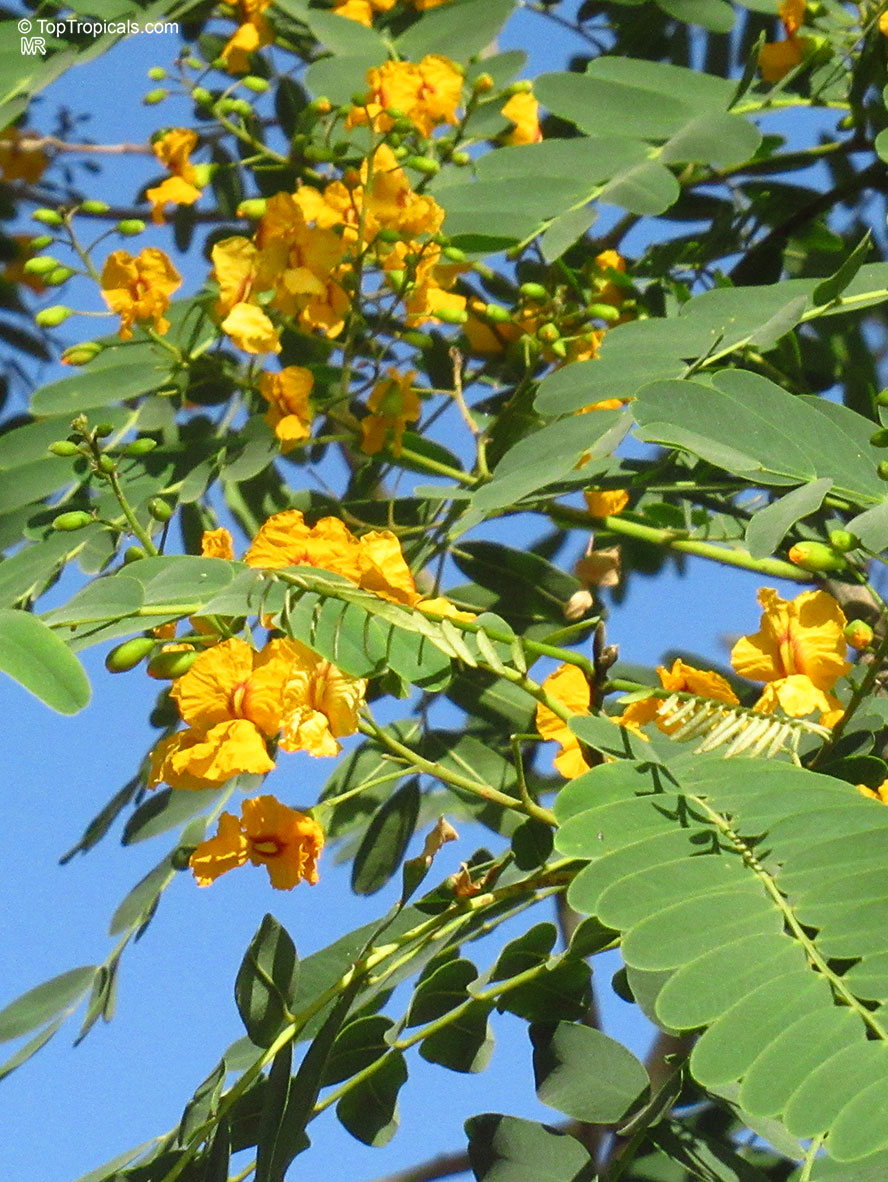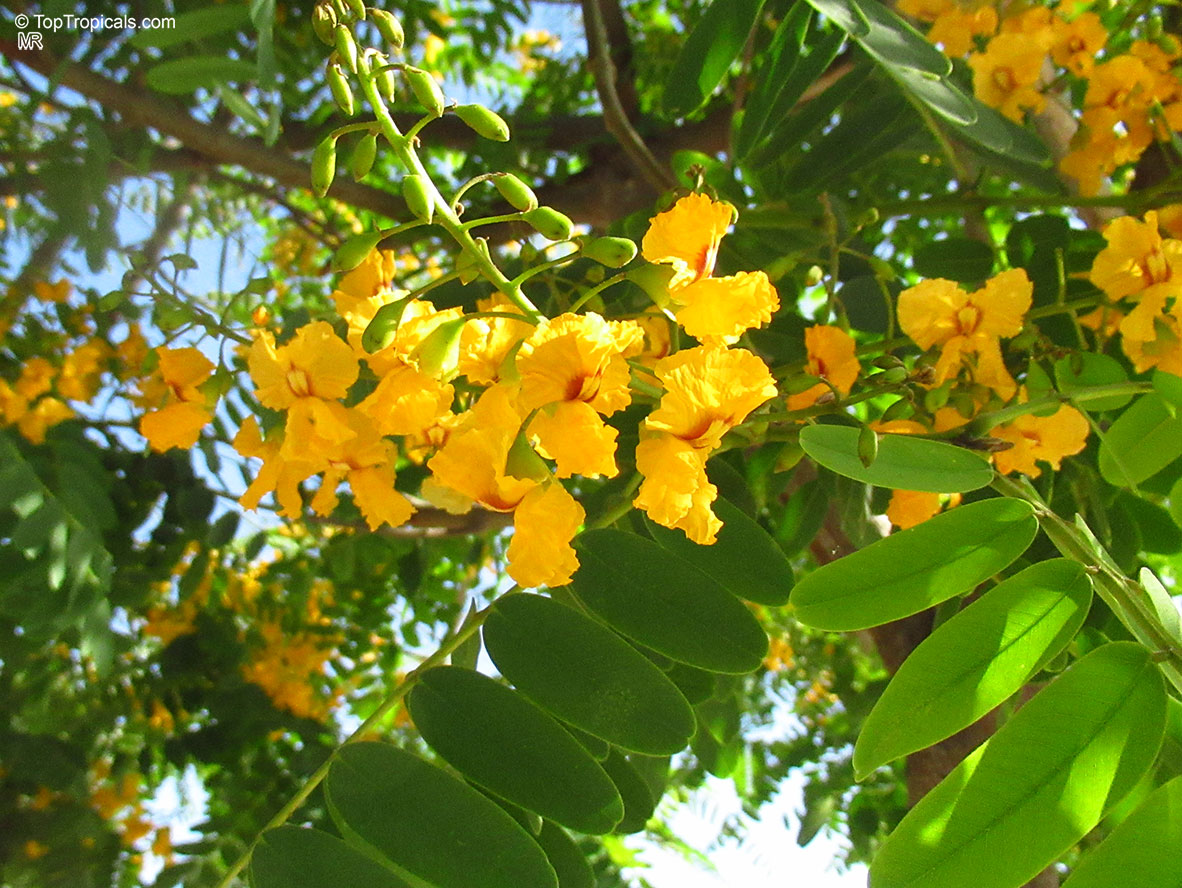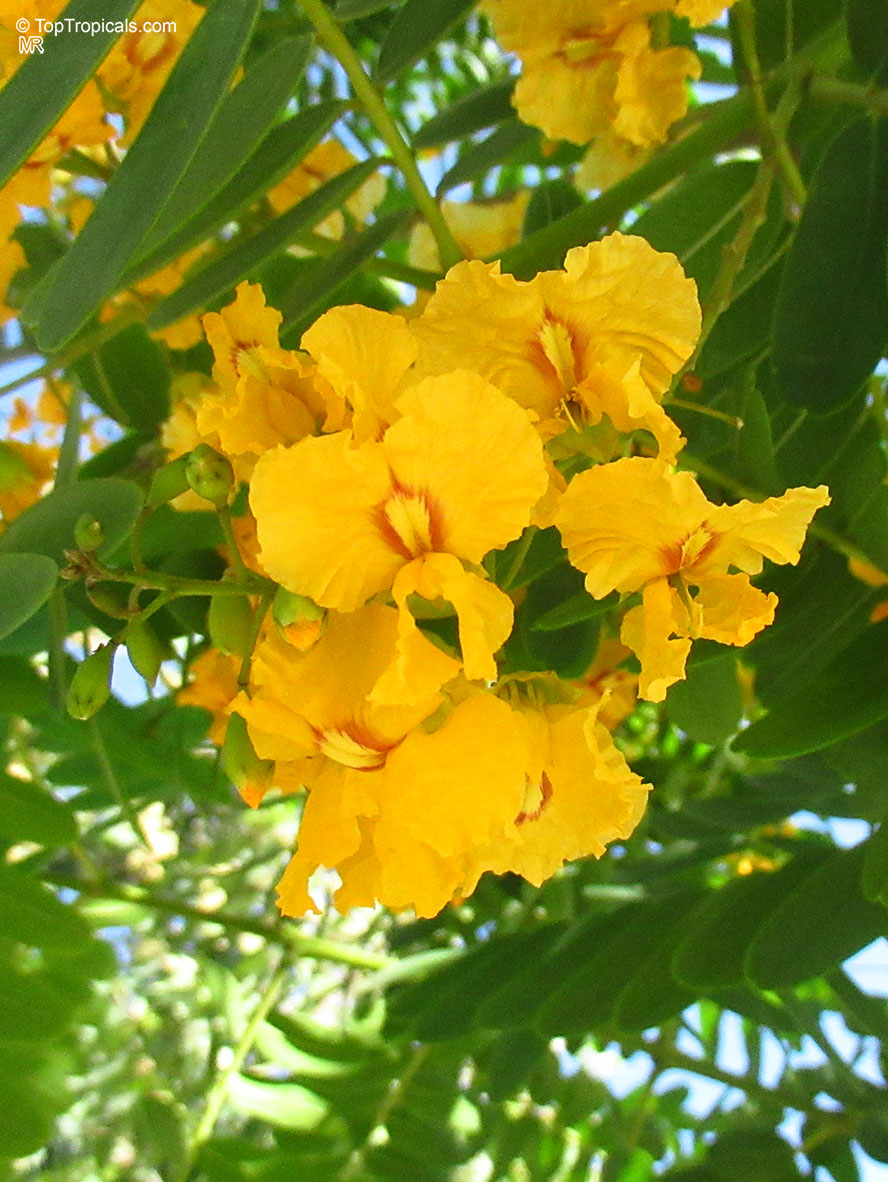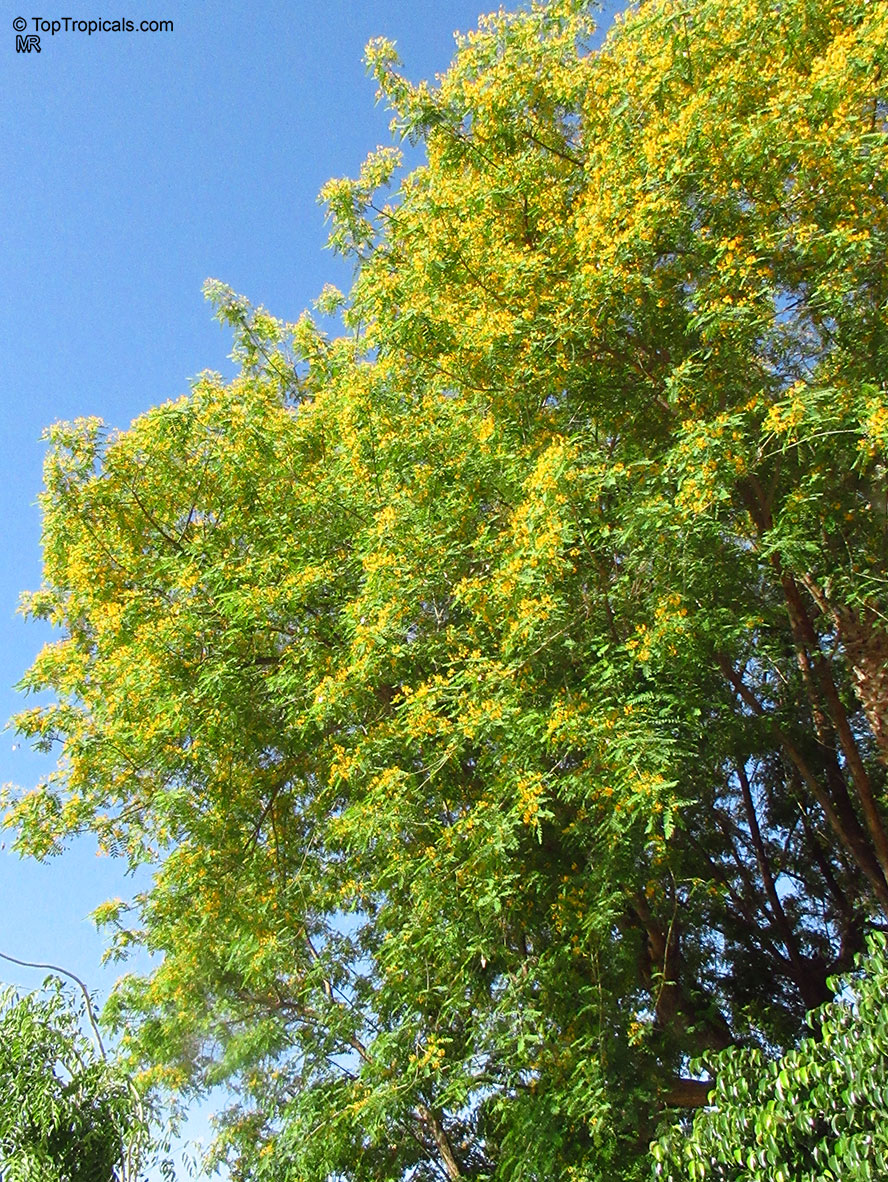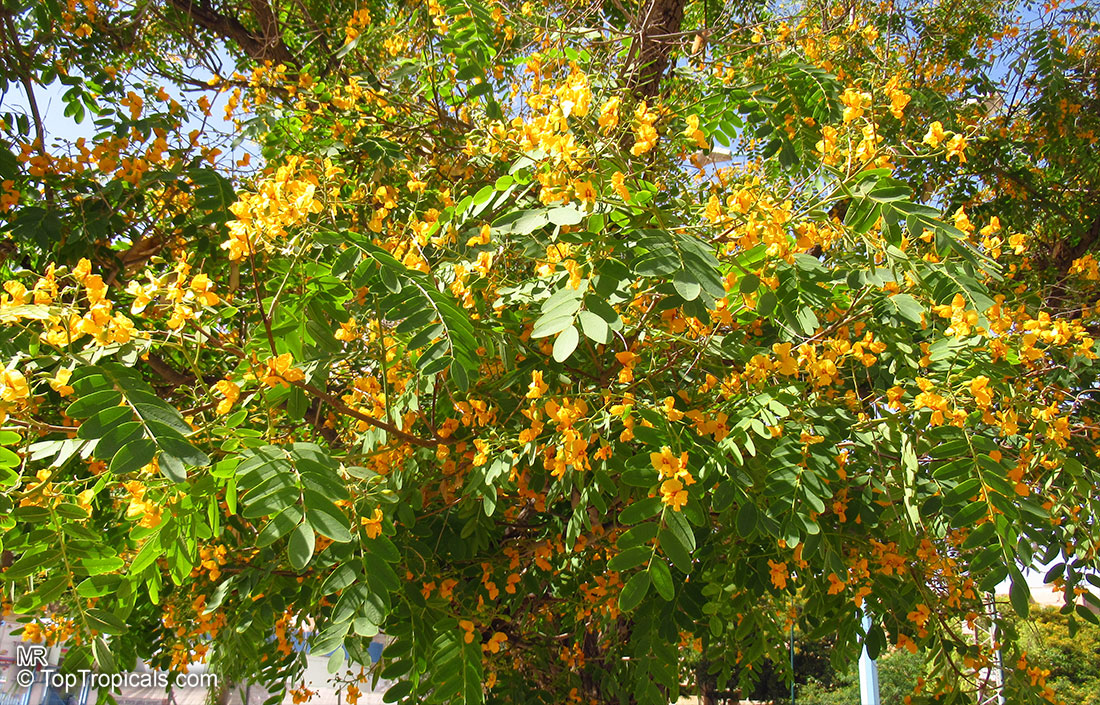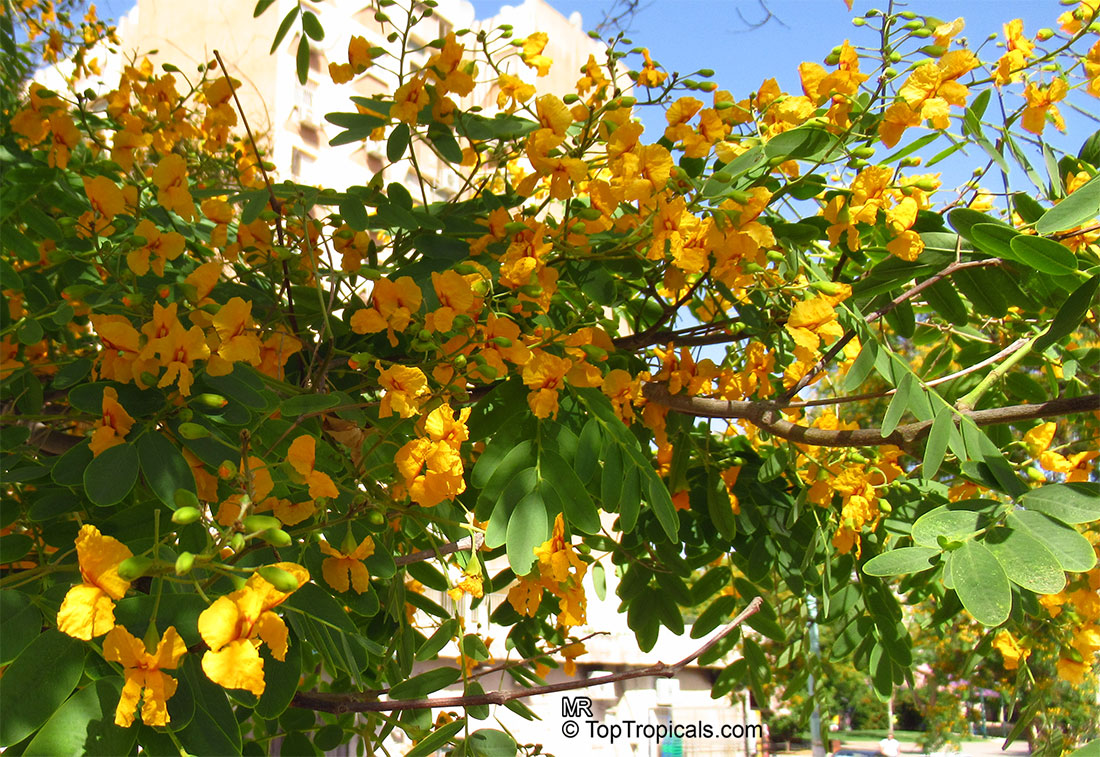Jacaranda - Plant Encyclopedia Results
Top Tropicals Plant Encyclopedia
| Number of plants found: 6 |
Botanical name: Jacaranda caerulea
Common names: Boxwood, Caribbean jacaranda Cancer Tree, What O'clock, Clock Bush, Knucker Box
Family: Bignoniaceae
Origin: Central America and the W. Indies







Beautiful in bloom and salt-tolerant, Caribbean jacaranda thrives in full sun and fertile, well-drained soil that is gritty or sandy. It is especially suited to alkaline soils. In areas with light winter frosts, it will grow as a multi-stemmed, shrubby tender perennial.
Botanical name: Jacaranda cuspidifolia
Common name: Jacaranda
Family: Bignoniaceae
Origin: Central America, Southern America, W. Indies







Jacarandas are grown widely in warm parts of the world and in greenhouses for their showy blue or violet flowers and attractive, oppositely paired, compound leaves. The genus includes about 50 species. The name is also applied to several tree species of the genera Machaerium and Dalbergia in the pea family (see legume), the sources of commercial rosewood. As well as the commonly seen white-flowering and variegated foliage varieties. See Article about Jacaranda.
Botanical names: Jacaranda jasminoides, Jacaranda curialis, Bignonia curialis
Common name: Dwarf Maroon Jacaranda
Family: Bignoniaceae
Origin: Brazil







Maroon Jacaranda is a captivating dwarf tree or large shrub renowned for its rich maroon-purple trumpet-shaped flowers. Native to Brazil, this ornamental plan is cherished for its compact size and vibrant blooms. Deciduous or evergreen shrub or small tree, 10-15 feet tall. This dwarf jacaranda blooms when still small, in 1-3 gal pot. Good choice for small gardens or patio, can be grown as a house plant near a bright window or in a greenhouse. Young trees are frost sensitive (to 25F) and need protection on the coldest nights. Adult trees are resistant to 20F.
Jacaranda jasminoides Maroon is a charming, compact tree that brings a touch of drama to small gardens and patios. It usually grows between 10 and 25 feet tall, with a bushy habit that makes it perfect for tight spaces or even containers. What really steals the show are its deep maroon to dark purple trumpet-shaped flowers that bloom in clusters from late spring through summer. In warm climates, it may surprise you with blooms at other times too! The fine, fern-like leaves add a delicate, lacy texture to the overall look.
This jacaranda loves full sun but will tolerate a bit of shade, and it is happiest in fertile, well-drained soil. Water it regularly when it is young or during dry spells, but once established, it is fairly easygoing. It s best suited for USDA zones 9 to 11, and while mature plants can handle brief cold snaps down to 20F, younger ones appreciate a little extra protection when the temps dip.
Whether in the ground or in a pot, the Maroon Jacaranda is a low-maintenance beauty. A little pruning here and there keeps it tidy, and its elegant blooms make it a standout wherever it s planted. In warm places it may keep its foliage year-round, giving you a long-lasting touch of tropical color. A great pick for anyone who wants big color in a small footprint!
This jacaranda loves full sun but will tolerate a bit of shade, and it's happiest in fertile, well-drained soil. Water it regularly when it's young or during dry spells, but once established, it's fairly easygoing. It is best suited for USDA zones 9 to 11, and while mature plants can handle brief cold snaps down to 20F, younger ones appreciate a little extra protection when the temps dip.
Whether in the ground or in a pot, the Maroon Jacaranda is a low-maintenance beauty. A little pruning here and there keeps it tidy, and its elegant blooms make it a standout wherever it is planted. In warm places it may keep its foliage year-round, giving you a long-lasting touch of tropical color. A great pick for anyone who wants big color in a small footprint!
Botanical names: Jacaranda mimosifolia, Jacaranda acutifolia
Common name: Jacaranda
Family: Bignoniaceae
Origin: Central America and the W. Indies.
Hardiness: 25°F







Jacarandas are grown widely in warm parts of the world and in greenhouses for their showy blue or violet flowers and attractive, oppositely paired, compound leaves. The genus includes about 50 species. The name is also applied to several tree species of the genera Machaerium and Dalbergia in the pea family (legume), the sources of commercial rosewood. The blue flowers of the Jacaranda tree adorn the streets of many African cities, such as: Pretoria - the Jacaranda City. Jacaranda mimosifolia are spectacular late spring flowering trees, which create washes of purple through many towns and suburbs each spring. In particular mass plantings of jacarandas along the street create a river of purple as well as a carpet underneath the trees when the flowers begin to fall. Jacarandas are large trees which grow to 30ft tall and up to 30ft wide with a low, broad branching habit. As well as the commonly seen purple, there are also white-flowering and variegated foliage varieties. See Article about Jacaranda.
Recommended Fertilizer: SUNSHINE Megaflor - Bloom Nutrition Booster
7 gal pot. More developed root system, thicker trunk and branches. Plant height depends on growing season and variety. Dwarf varieties are slow growers and may be shorter. Contact us for exact size description if size/height matters to you. 7 gal plants may be shipped separately from other items by Ground service due to large size. See here time in transit (business days, excluding Sat-Sun!)
Recommended Fertilizer: SUNSHINE Megaflor - Bloom Nutrition Booster
Botanical names: Tipuana tipu, Tipuana speciosa, Machaerium tipu, Machaerium fertile
Common names: Pride of Bolivia, Yellow jacaranda, Rosewood, Tipu tree, Racehorse tree, Yellow jacaranda, Mtipia
Family: Fabaceae
Subfamily: Faboideae
Origin: Southern Bolivia, northern Argentina, southern Brazil, Uruguay, Paraguay
Hardiness: 30°F




Tipuana tipu (Pride of Bolivia) is a large, spreading evergreen tree native to Brazil and the mountain forests of Bolivia. It is now widely planted in the Mediterranean region and the tropics. The tree reaches heights of 50-60 feet and has red-brown bark with a fissured and flaky trunk. Its branches have gray, cracked bark and the sap from its cut branches is red and sticky. The tree blooms in the summer months of June to August, producing golden yellow, orange or orange-red flowers in 7-12 inch clusters. These flowers stand out against the tree's dense foliage and create an impressive display when they cover the surface of the tree.
Tipuana tipu is drought resistant and prefers sunny locations. It can tolerate a wide range of soils, but it is shallow rooted. Therefore, it is recommended to stake and water young plants until the roots are established. Once established, occasional pruning and deep watering will help maintain the tree's health. Despite being considered a subtropical plant, Tipuana tipu is surprisingly hardy and can withstand light frosts.
In cold areas, Tipuana tipu can be overwintered in a pot and kept in a sheltered place. However, it should not be exposed to temperatures below 30 degrees F as this can damage the flowers. Pruning is also necessary to keep the plant at its desired size, as unfettered growth can result in a tree taller than 20 feet. This tree is a beautiful choice for landscaping and is most attractive when its flowers are in bloom.
Use link to repeat this search:
https://toptropicals.com/cgi-bin/garden_catalog/cat.cgi?find=Jacaranda&search_op=and&keyword_op=and&language=e&number=10
&no_change_lang=1&user=tt&sale=1&first=0
